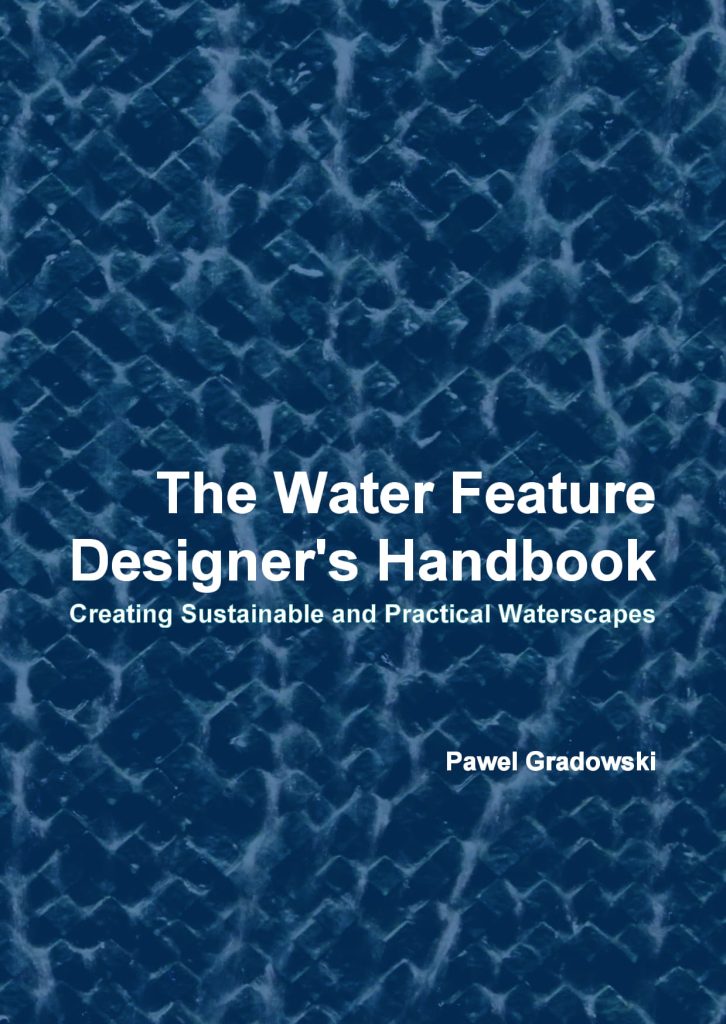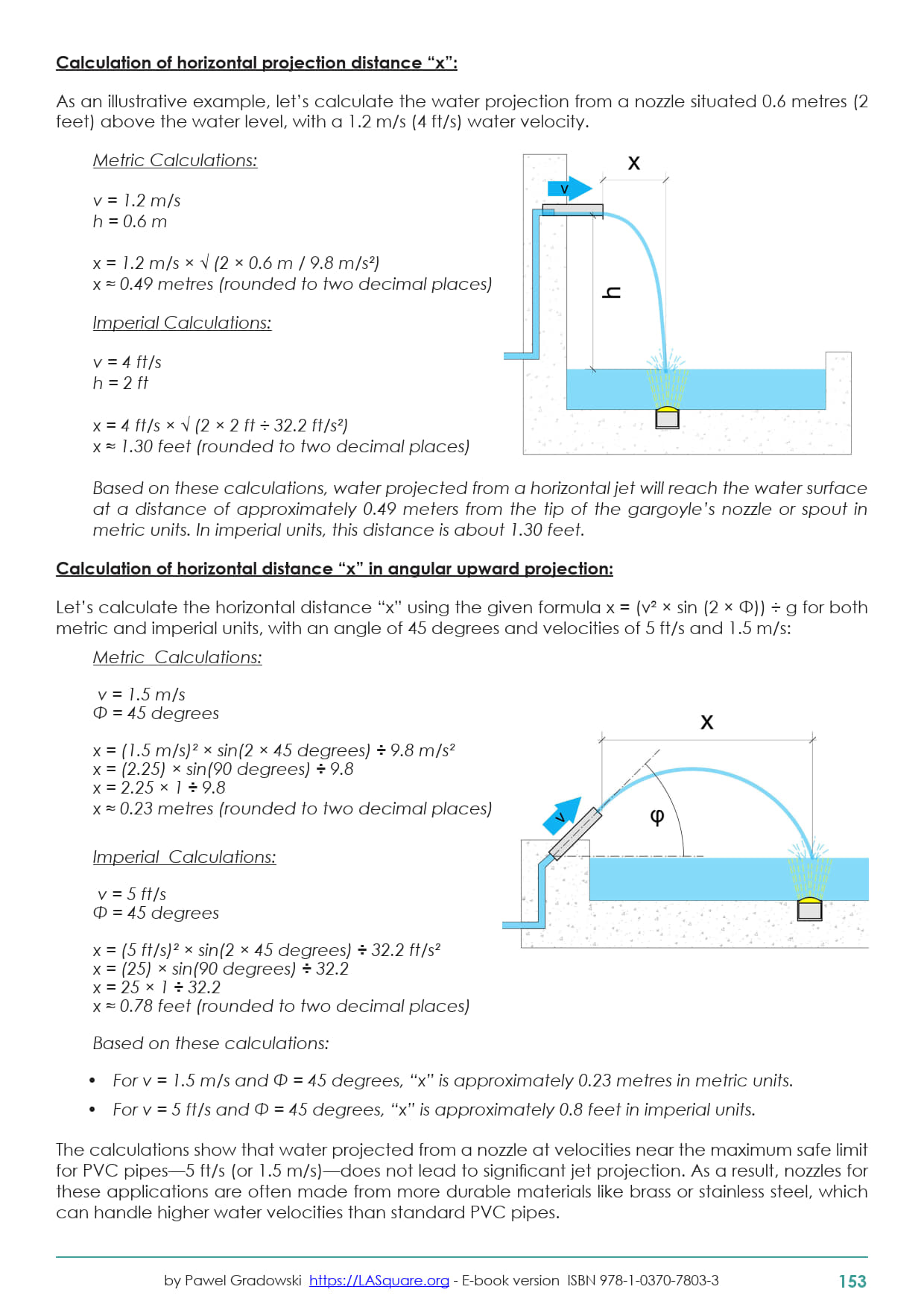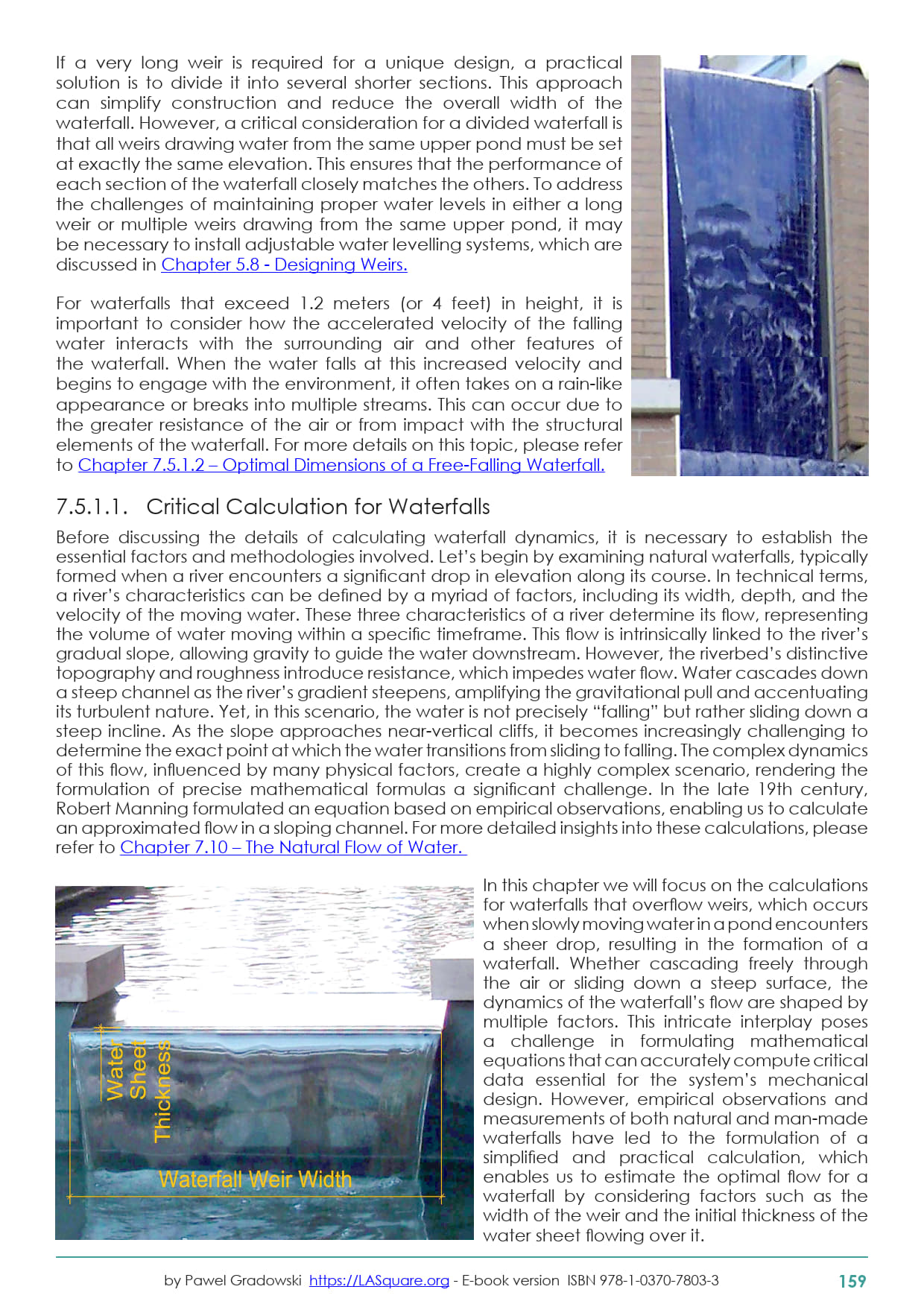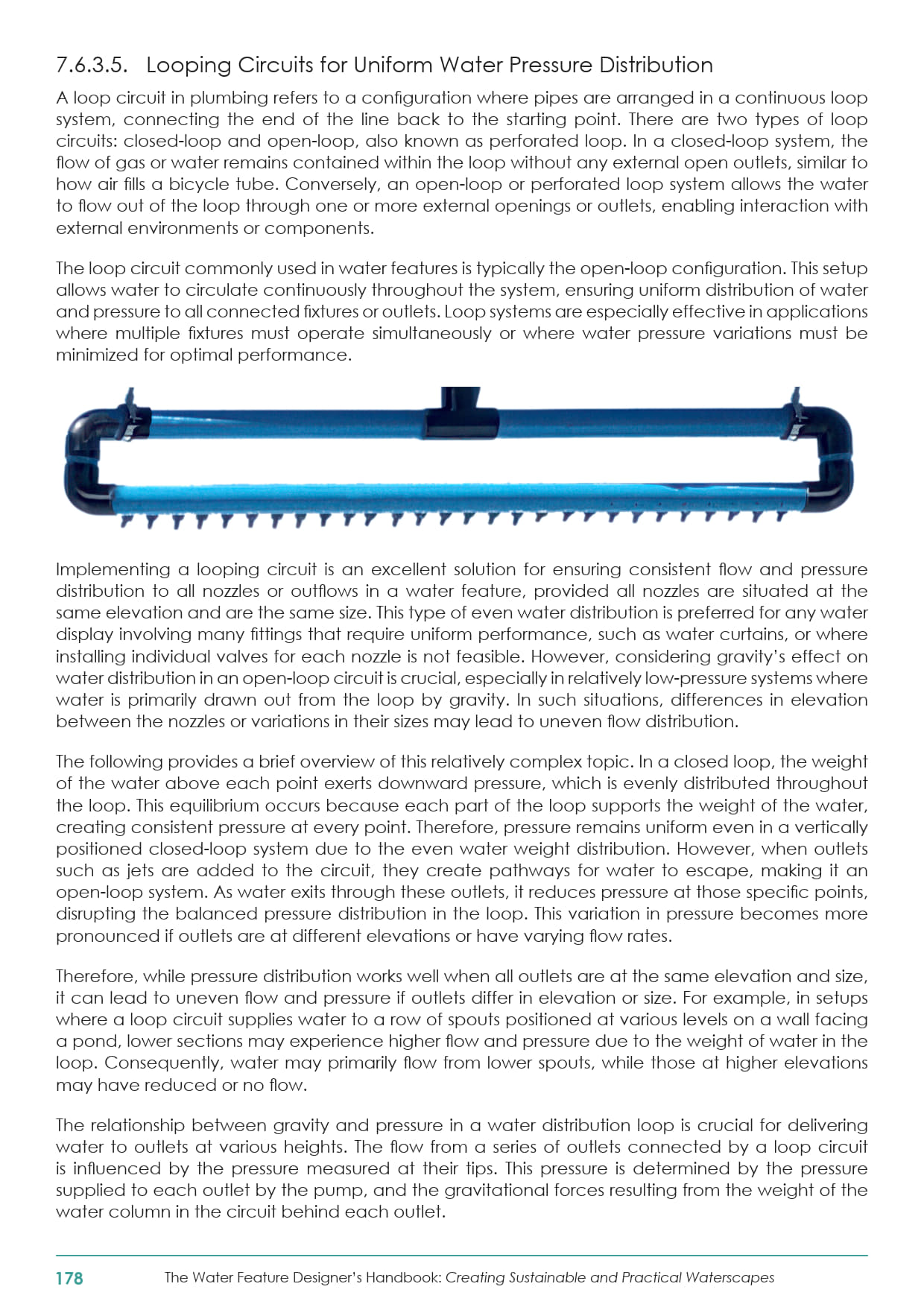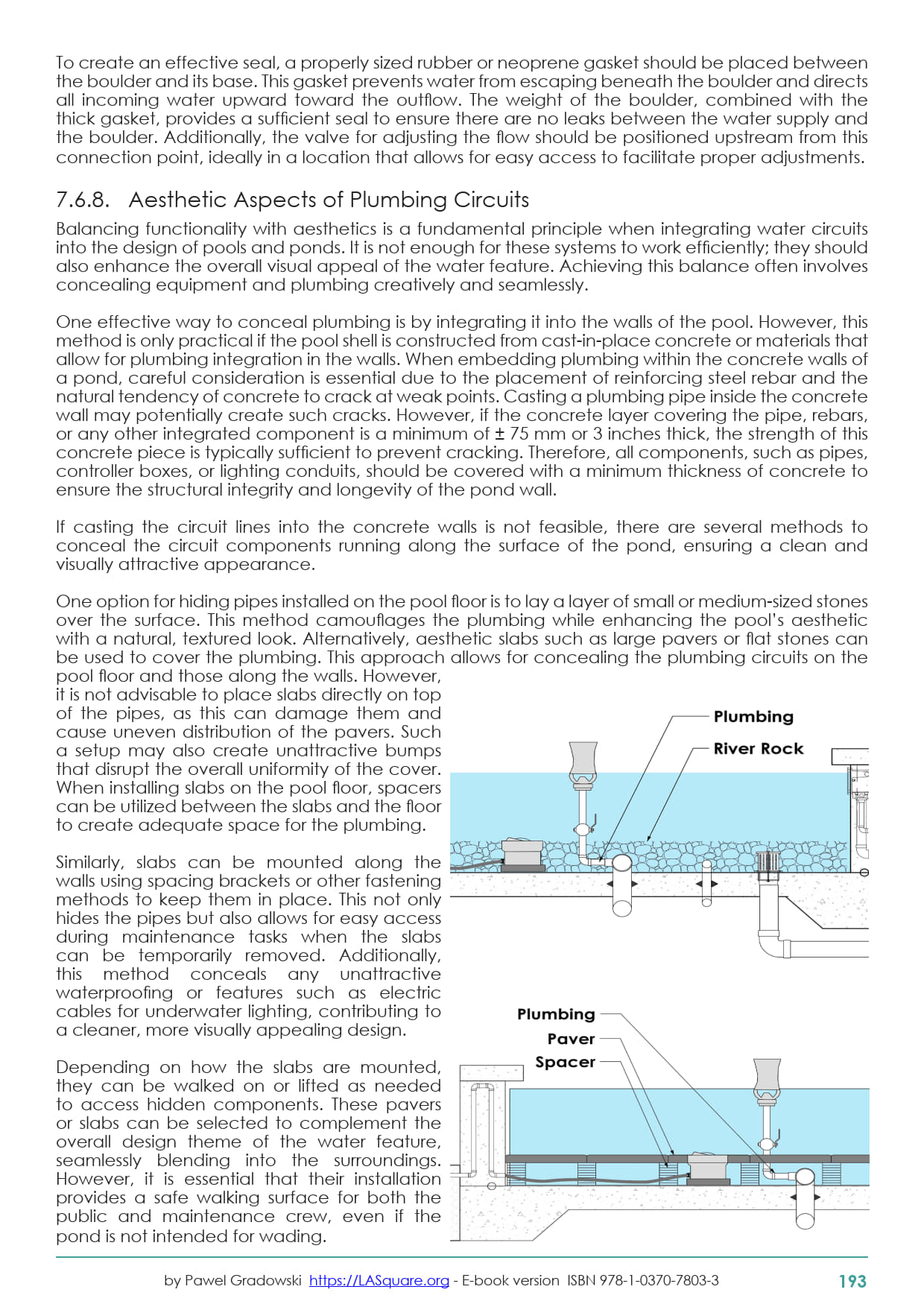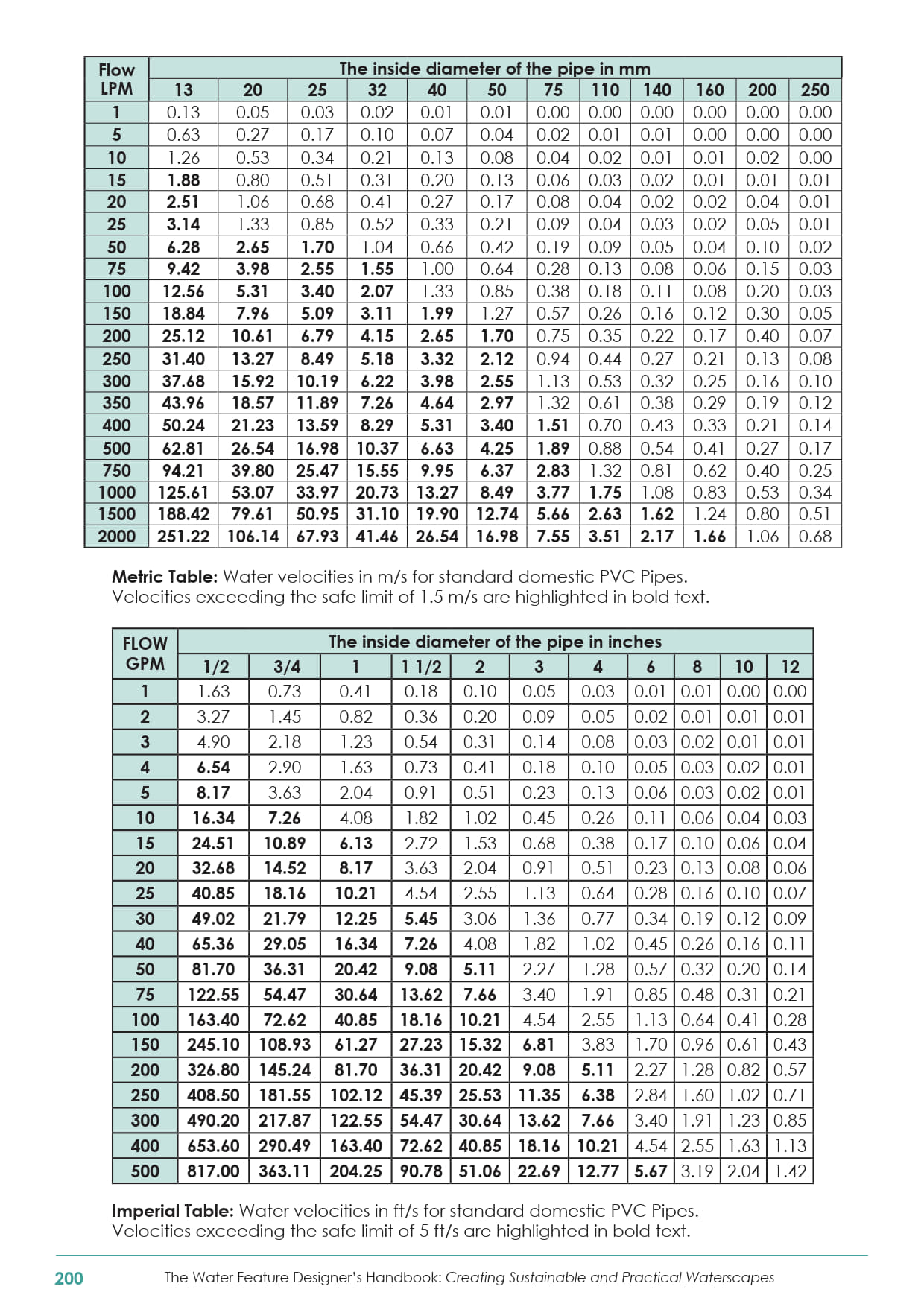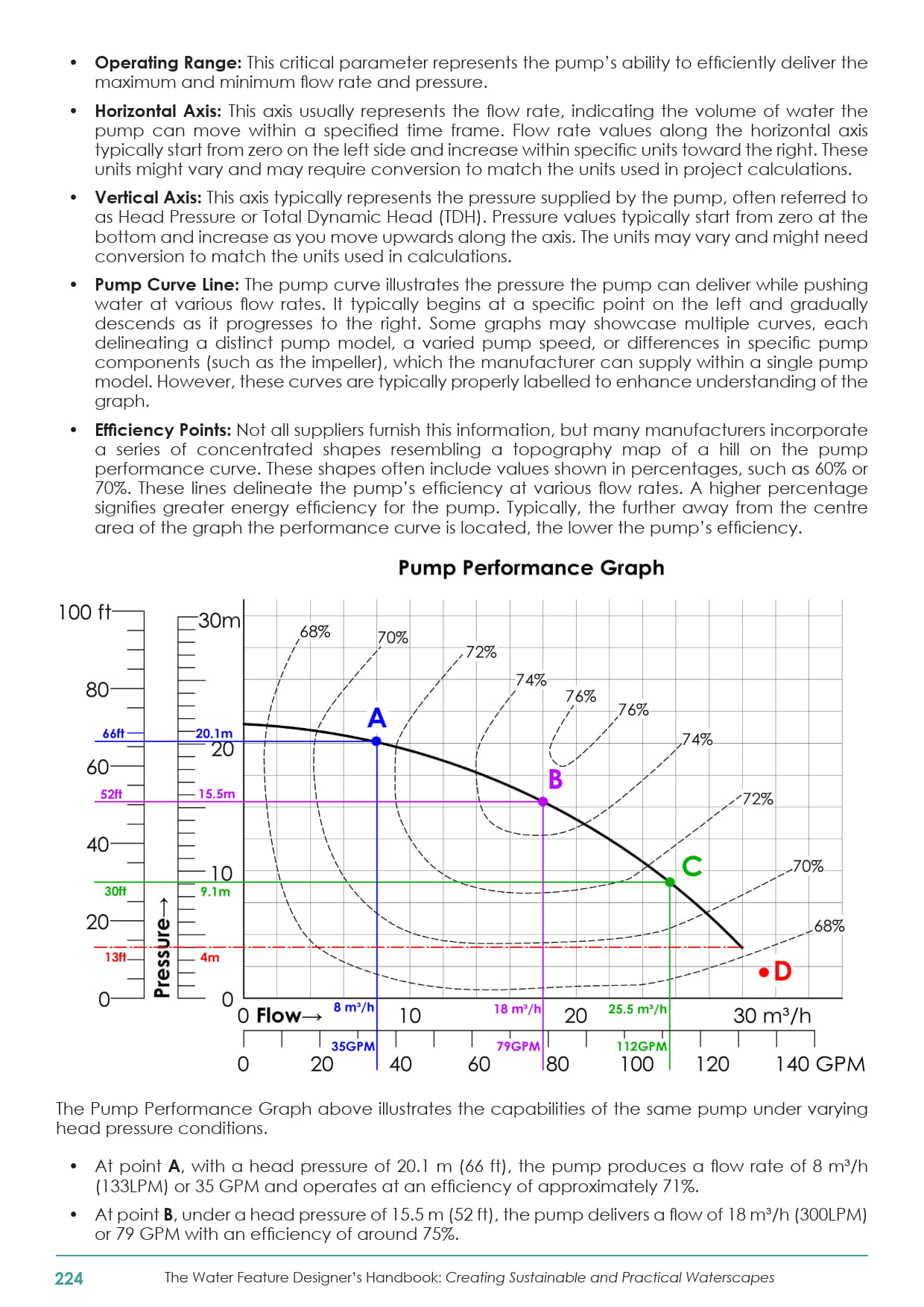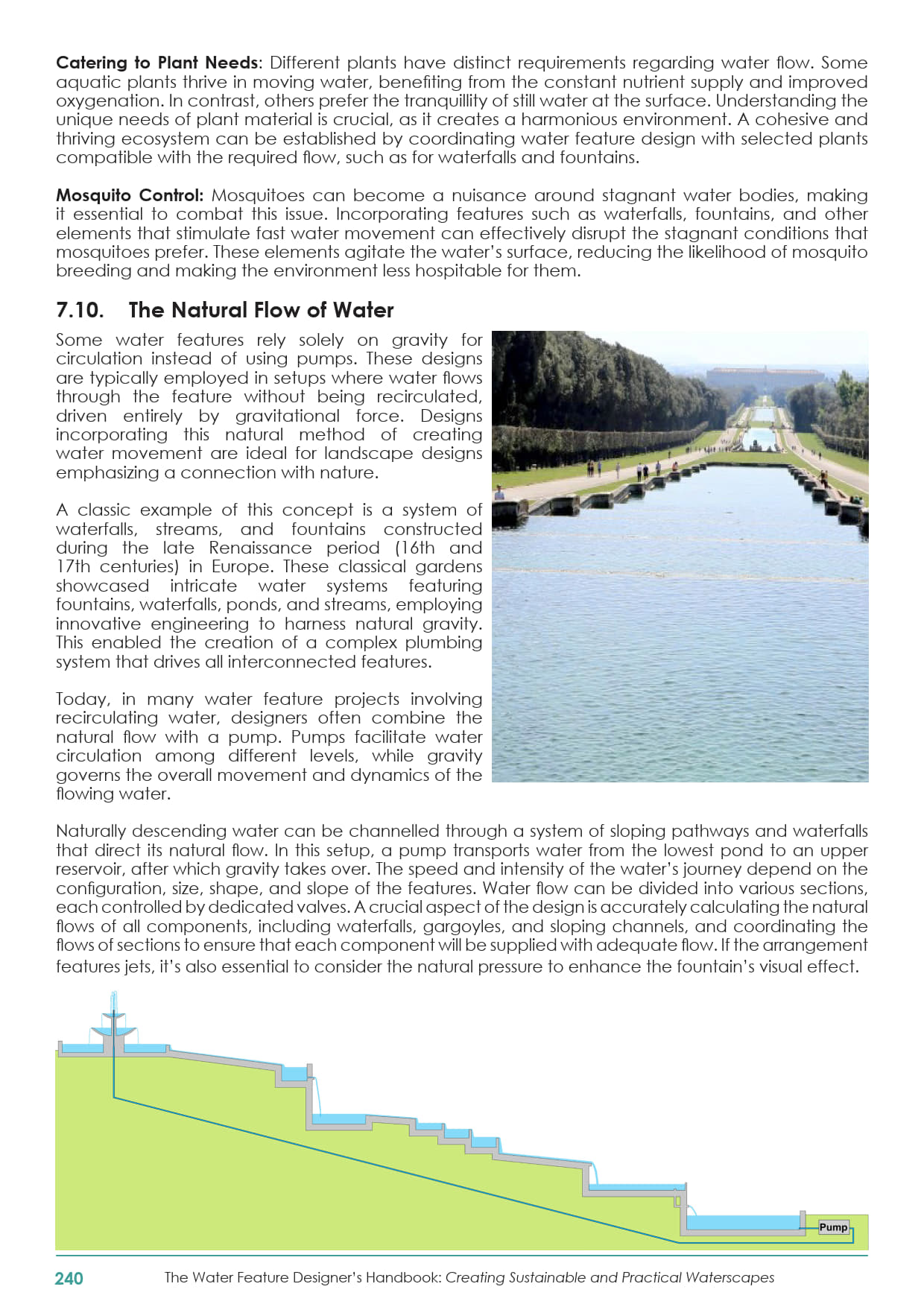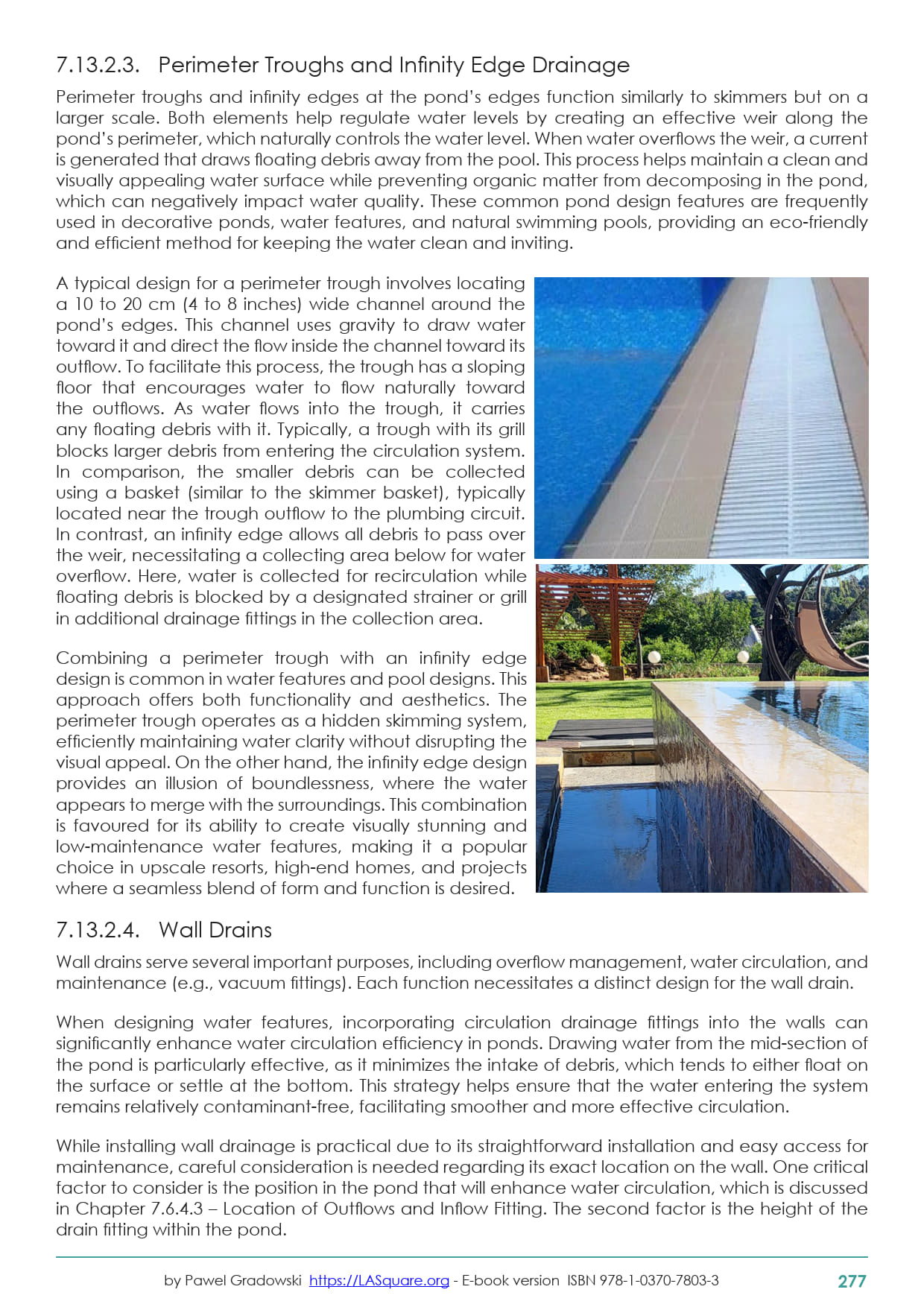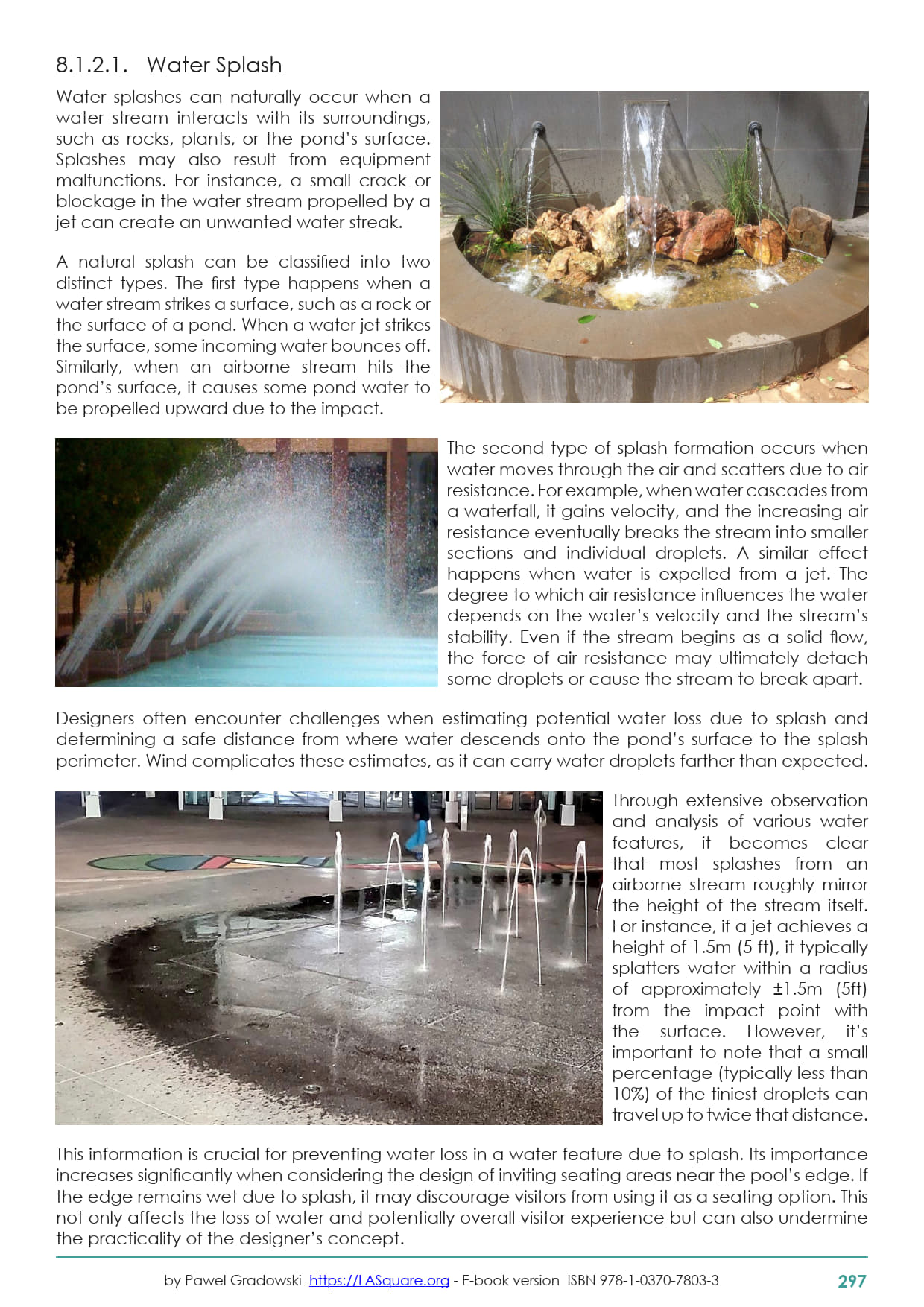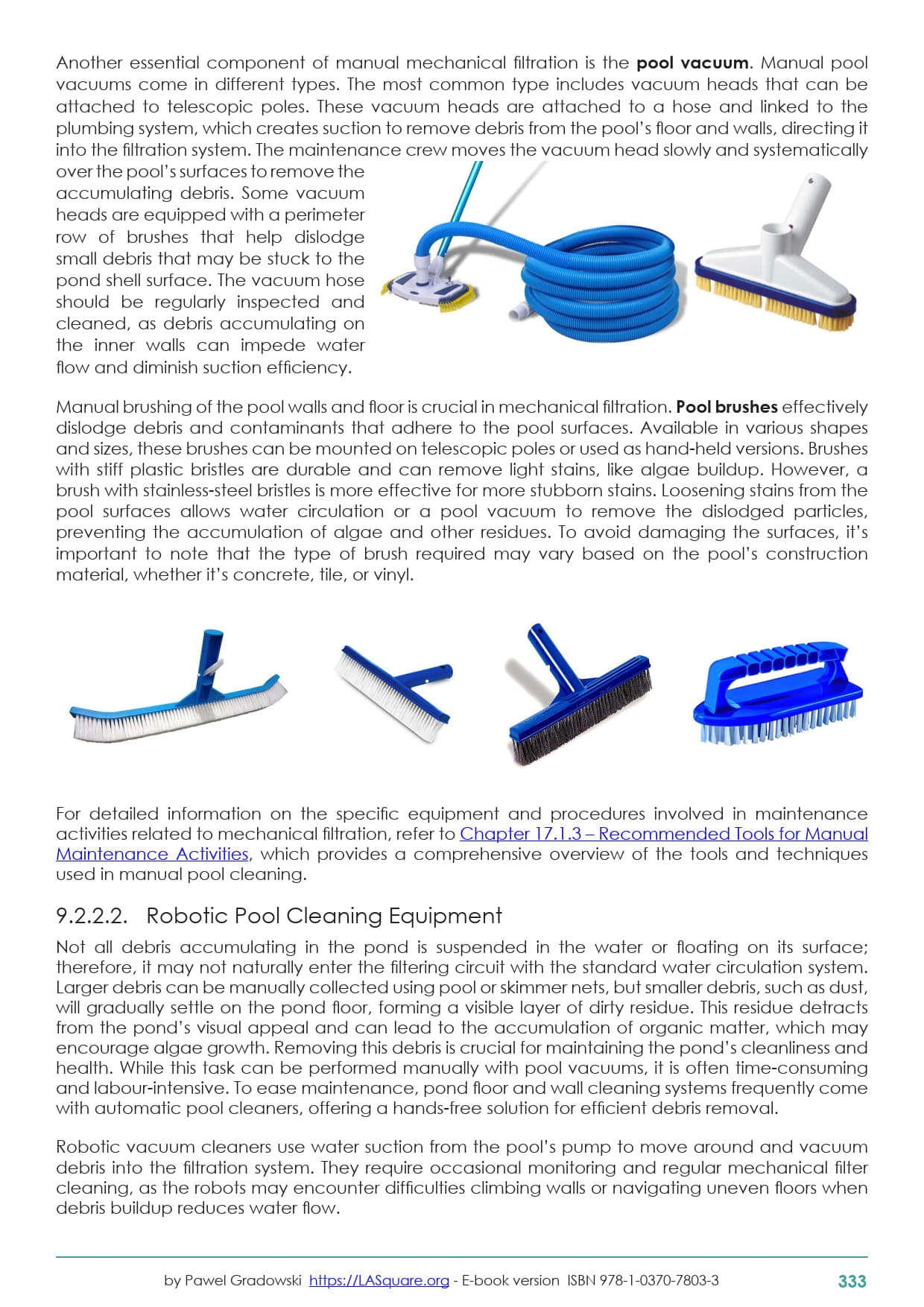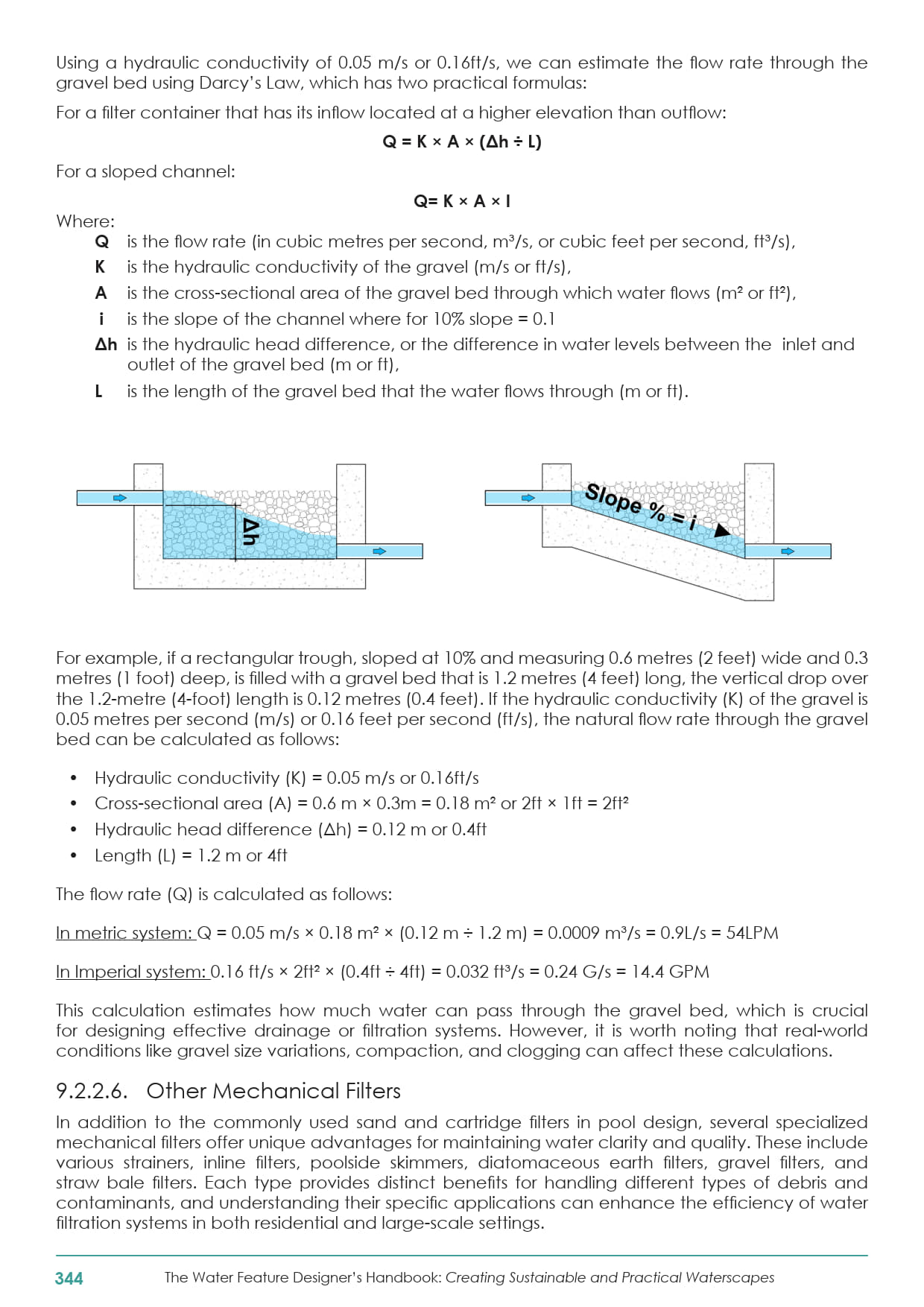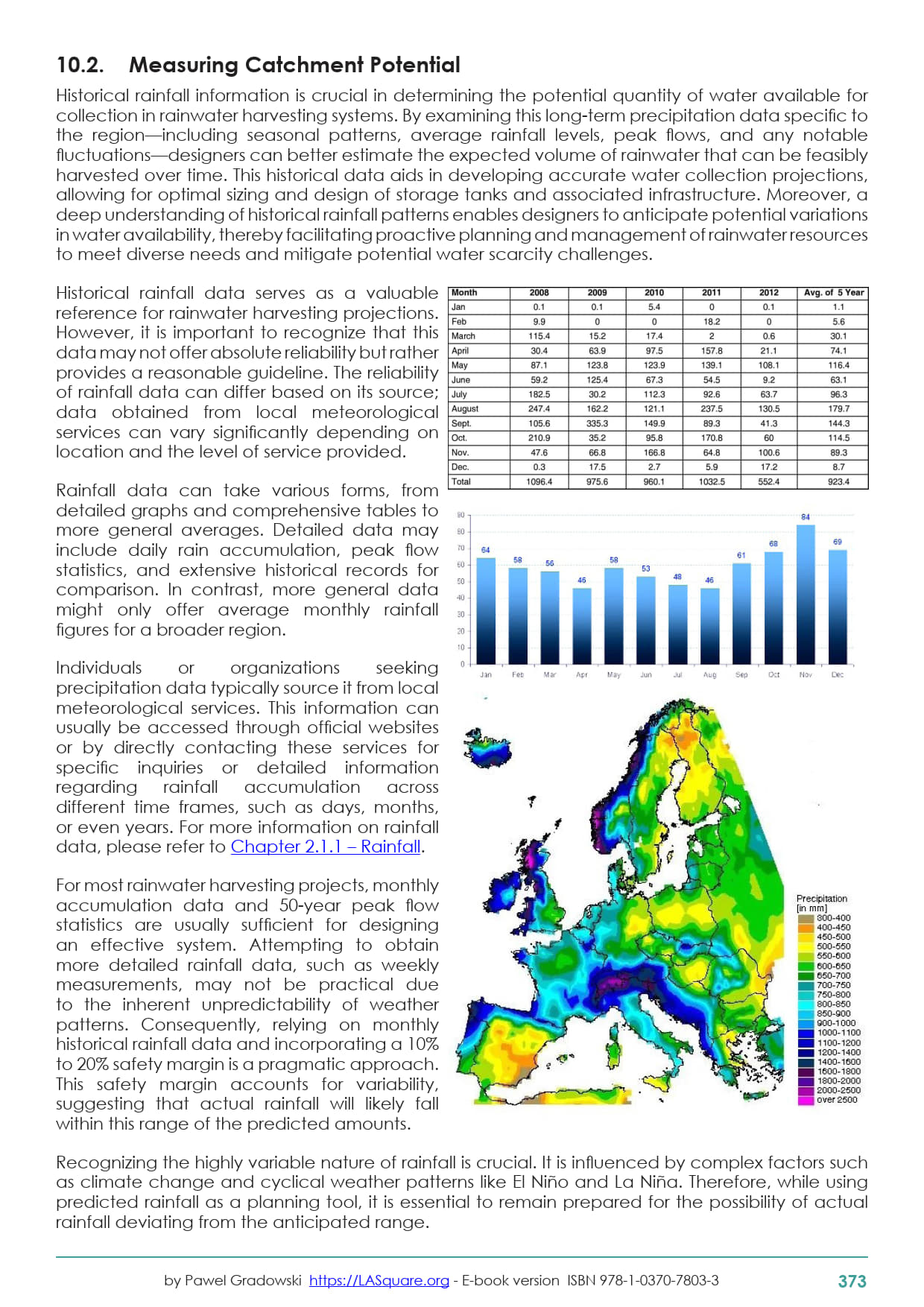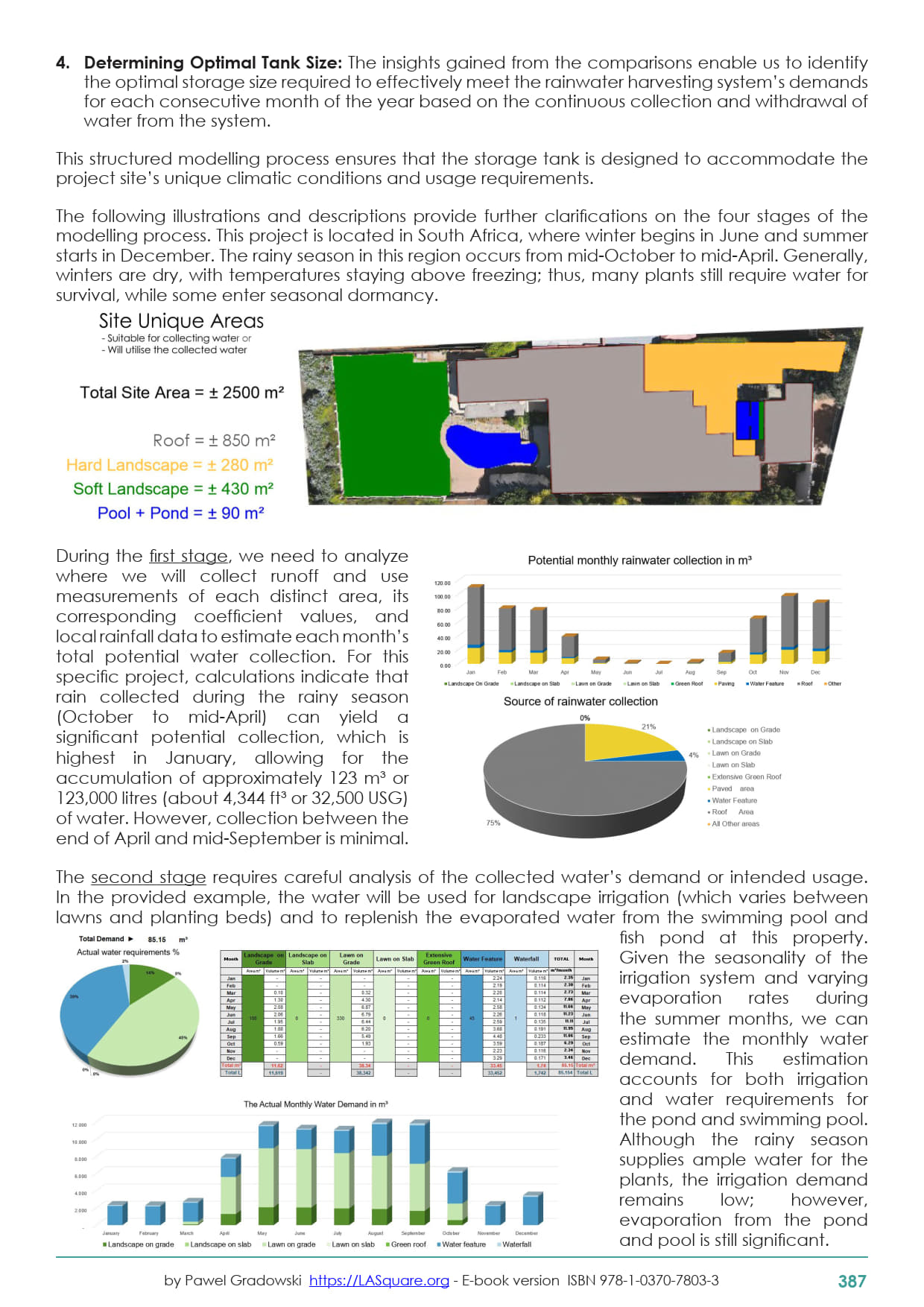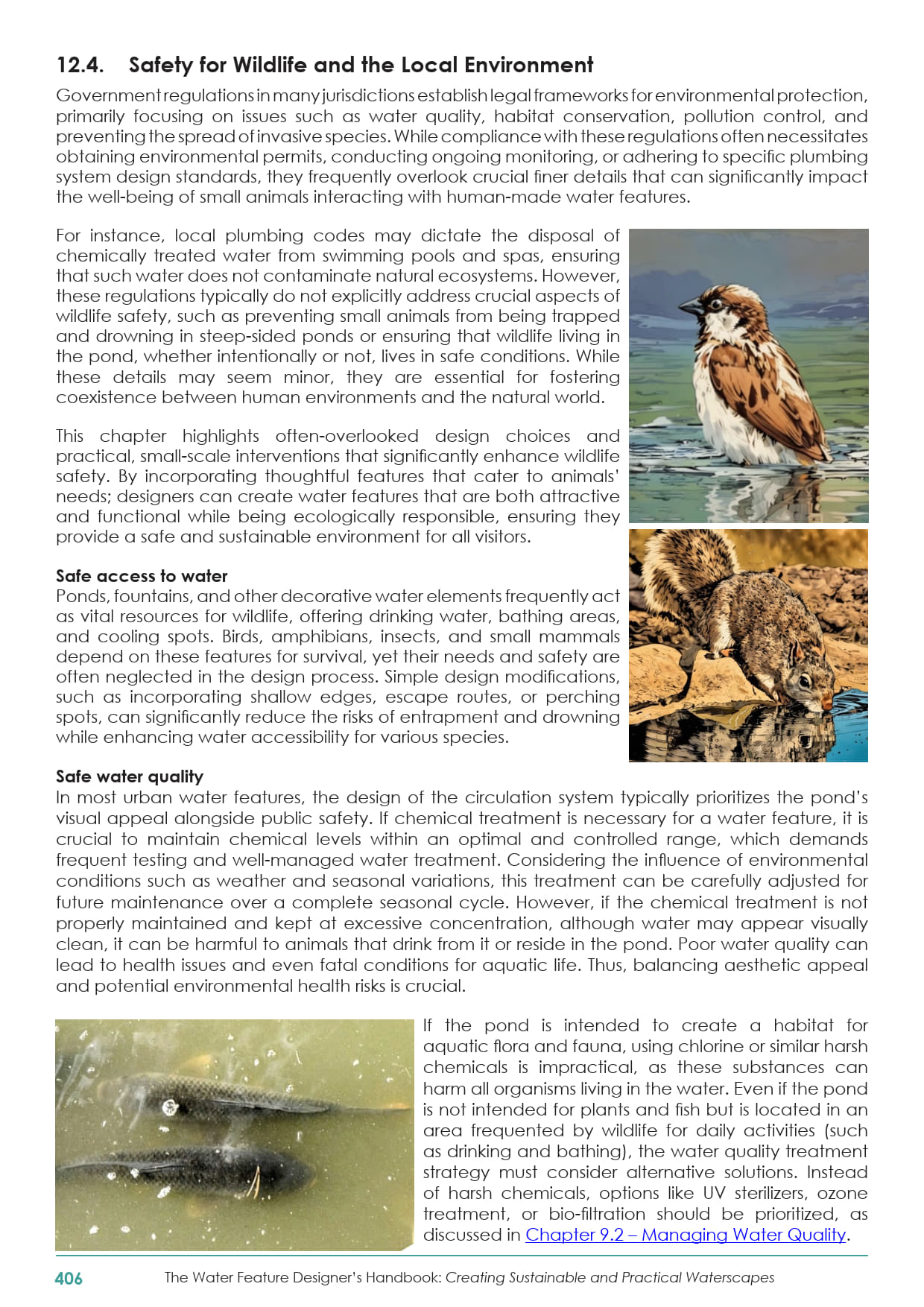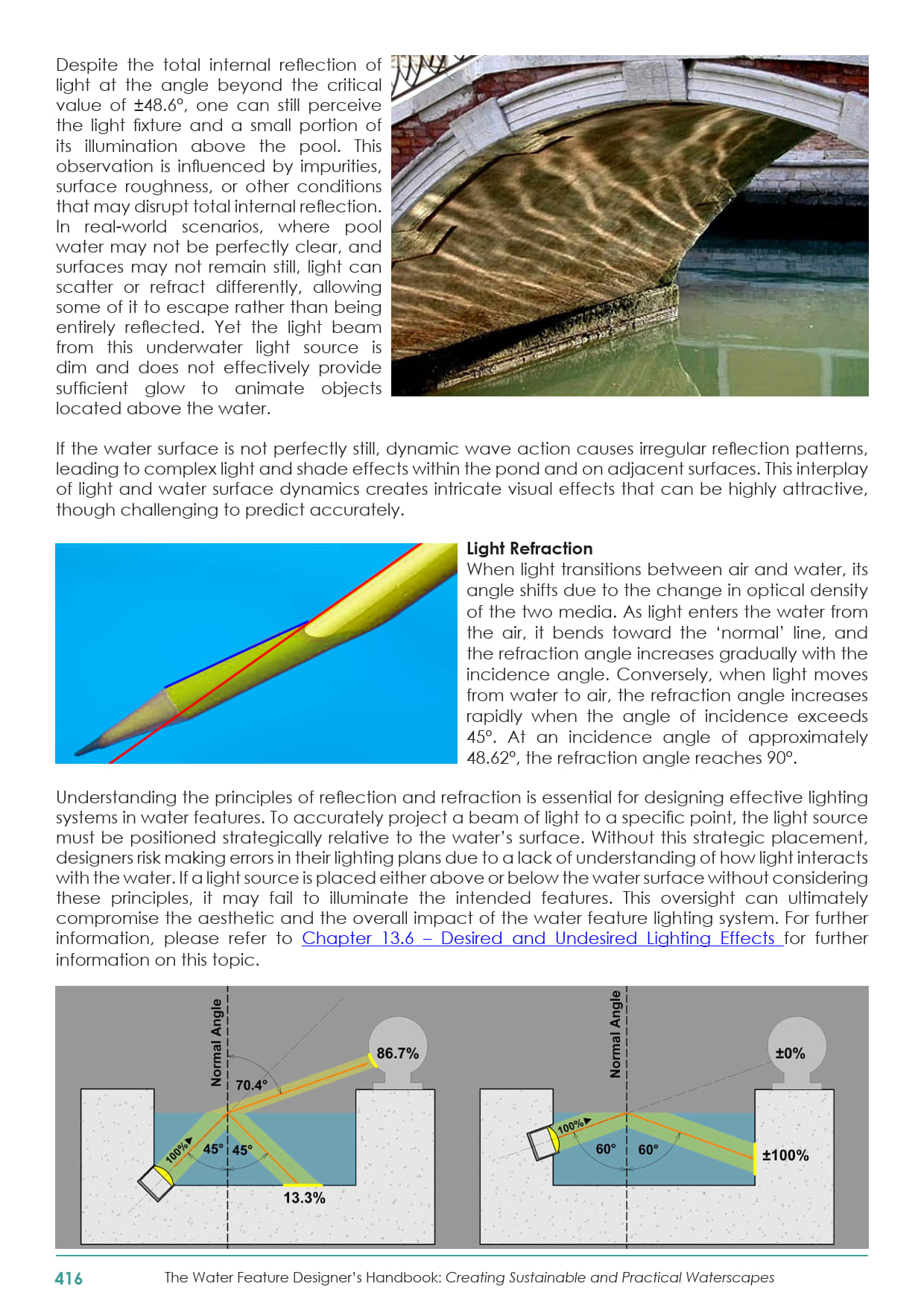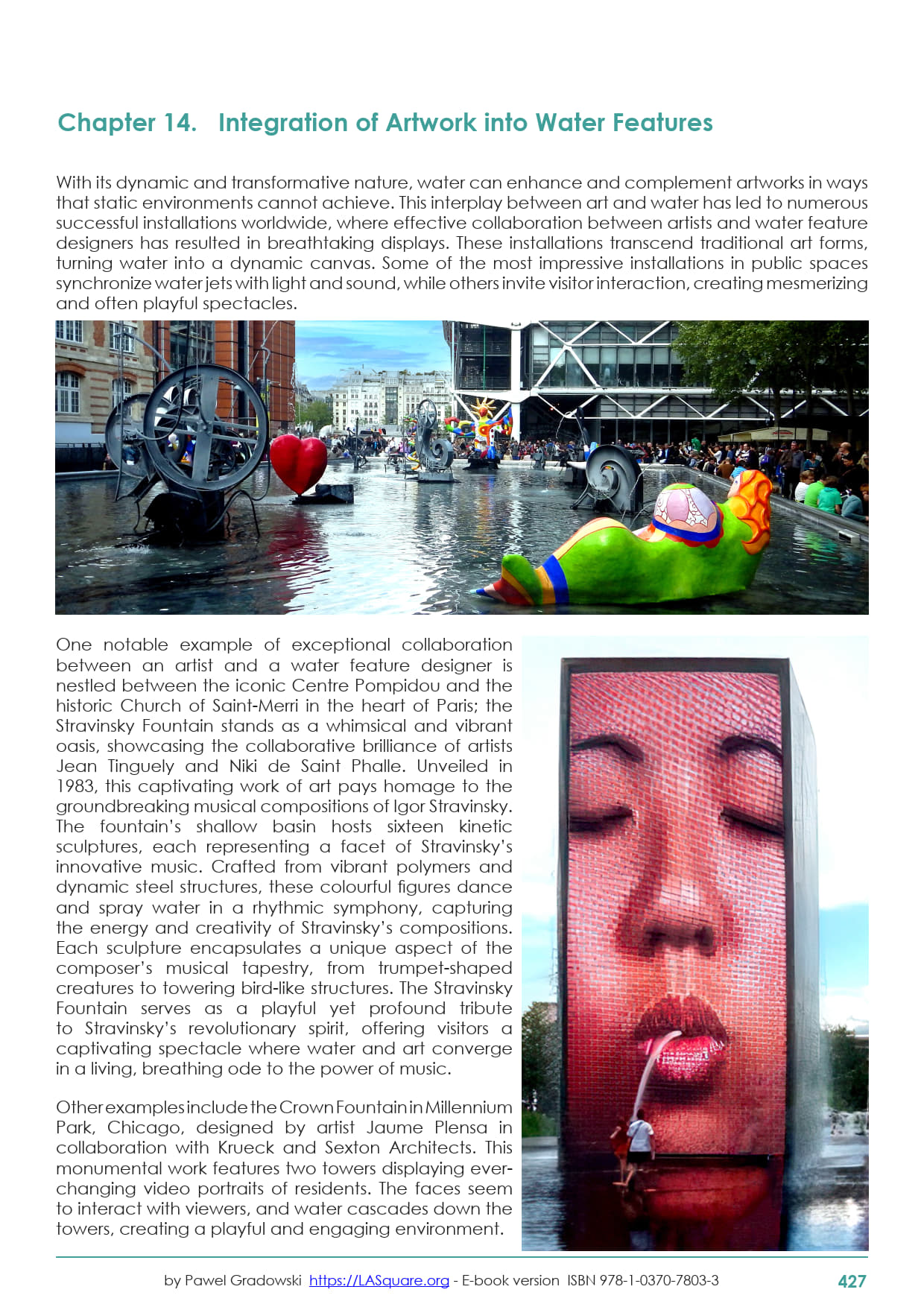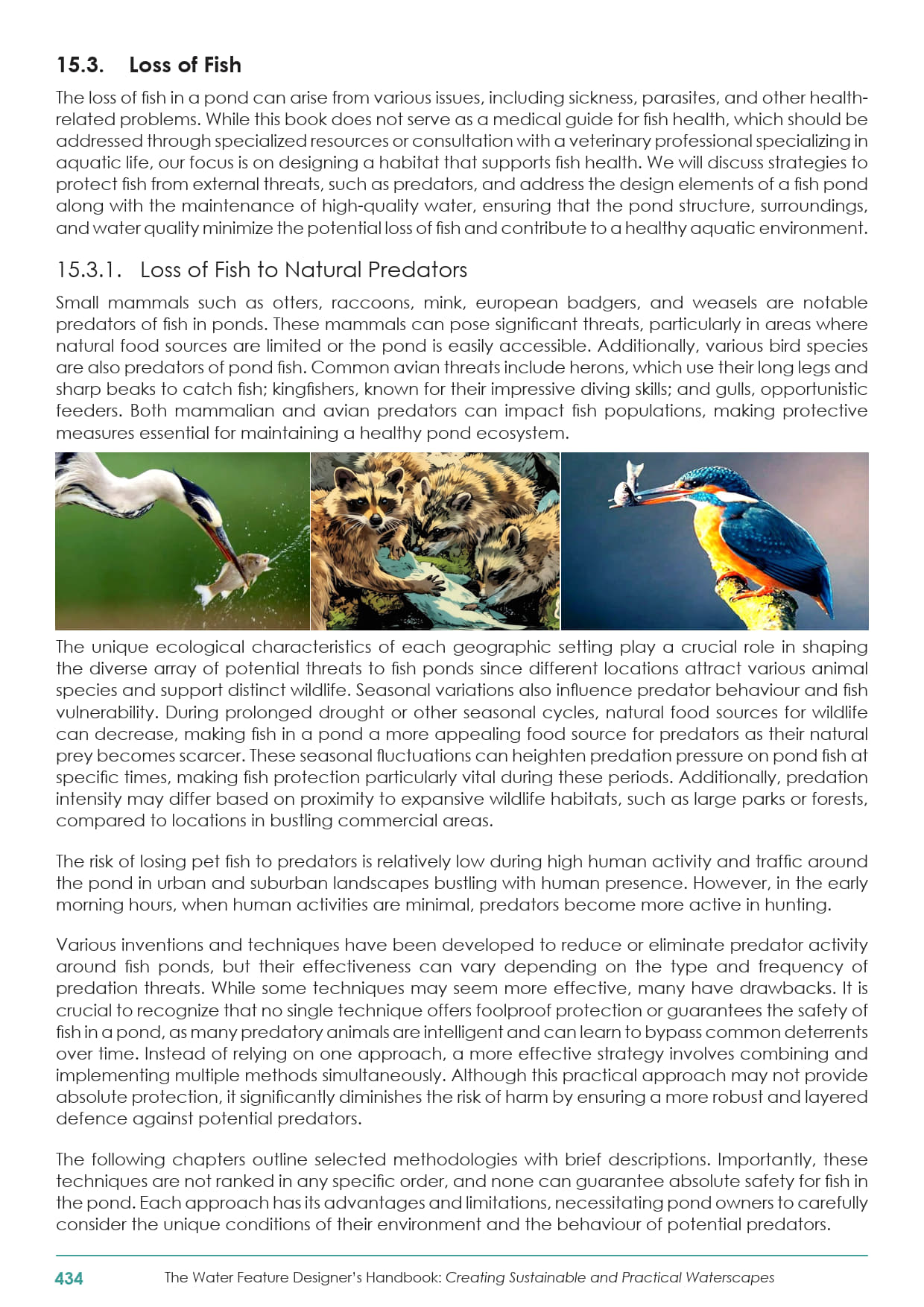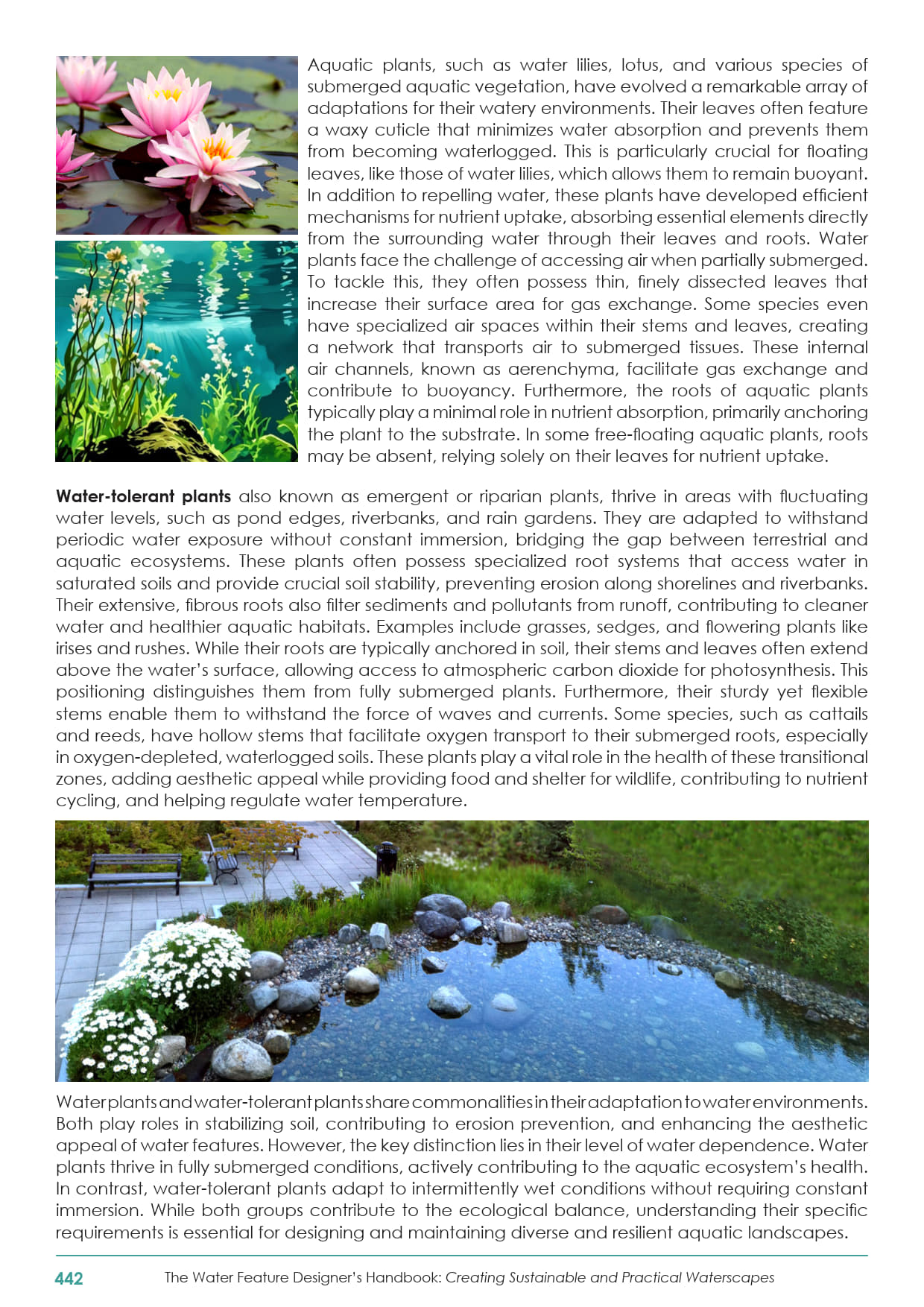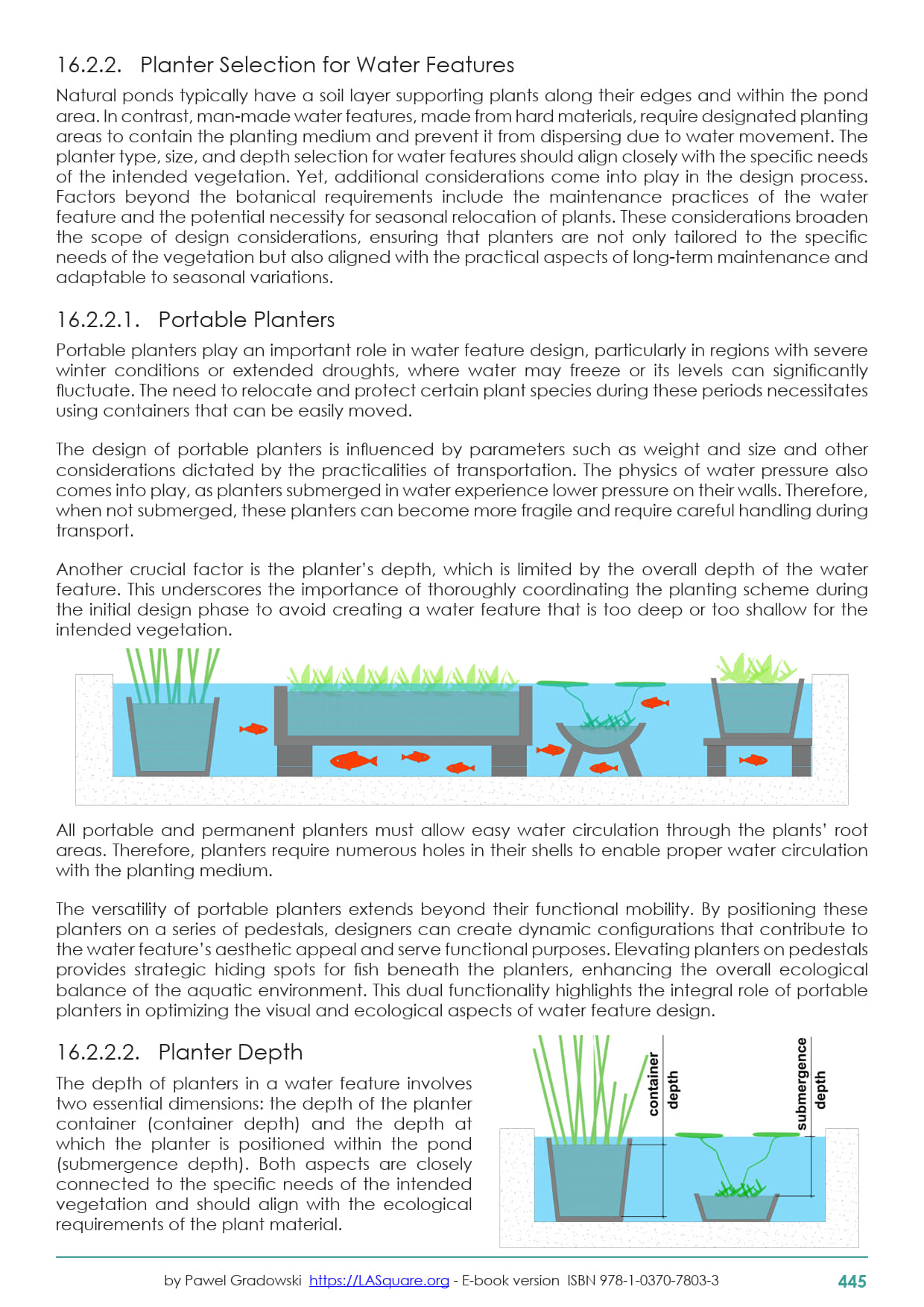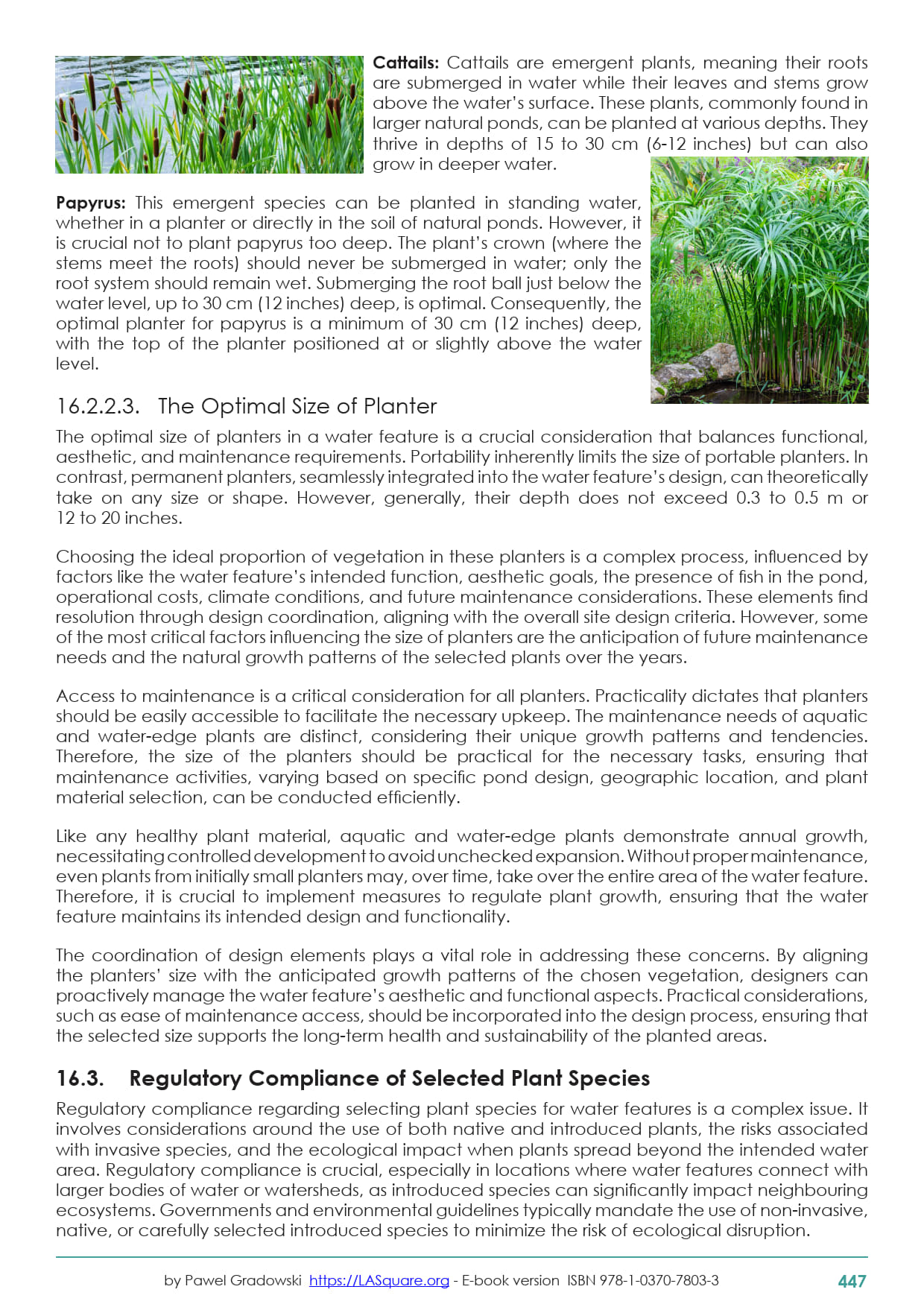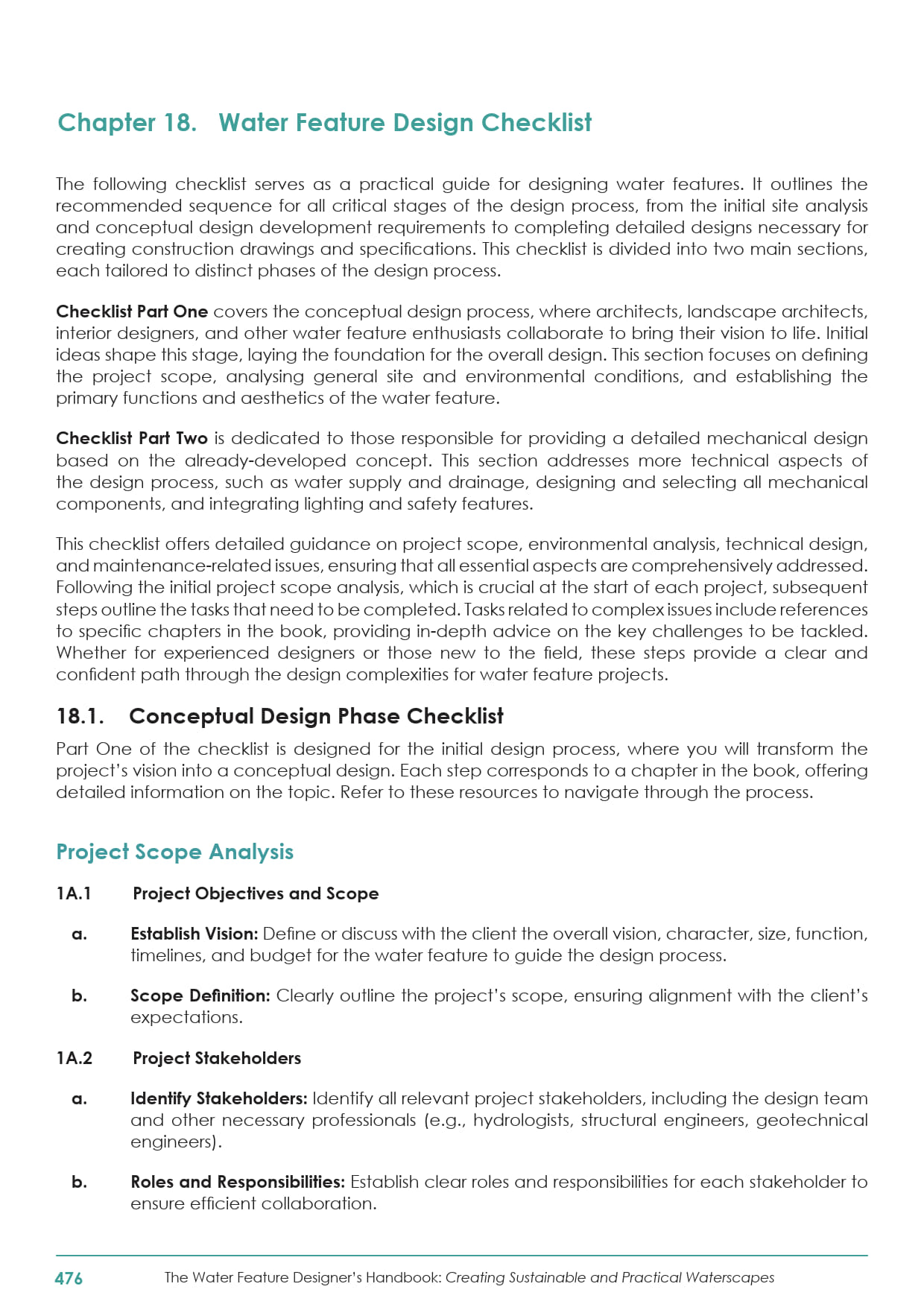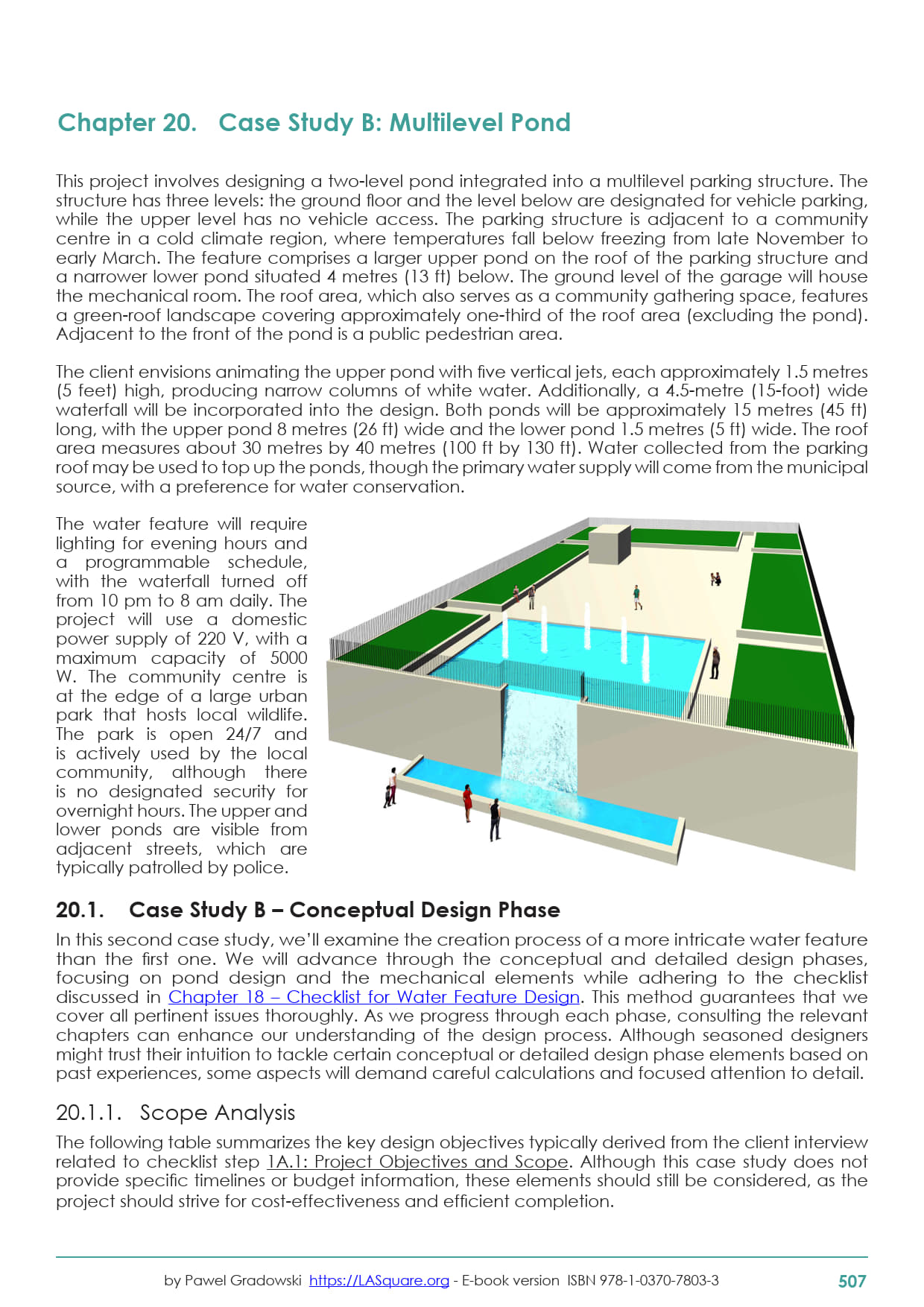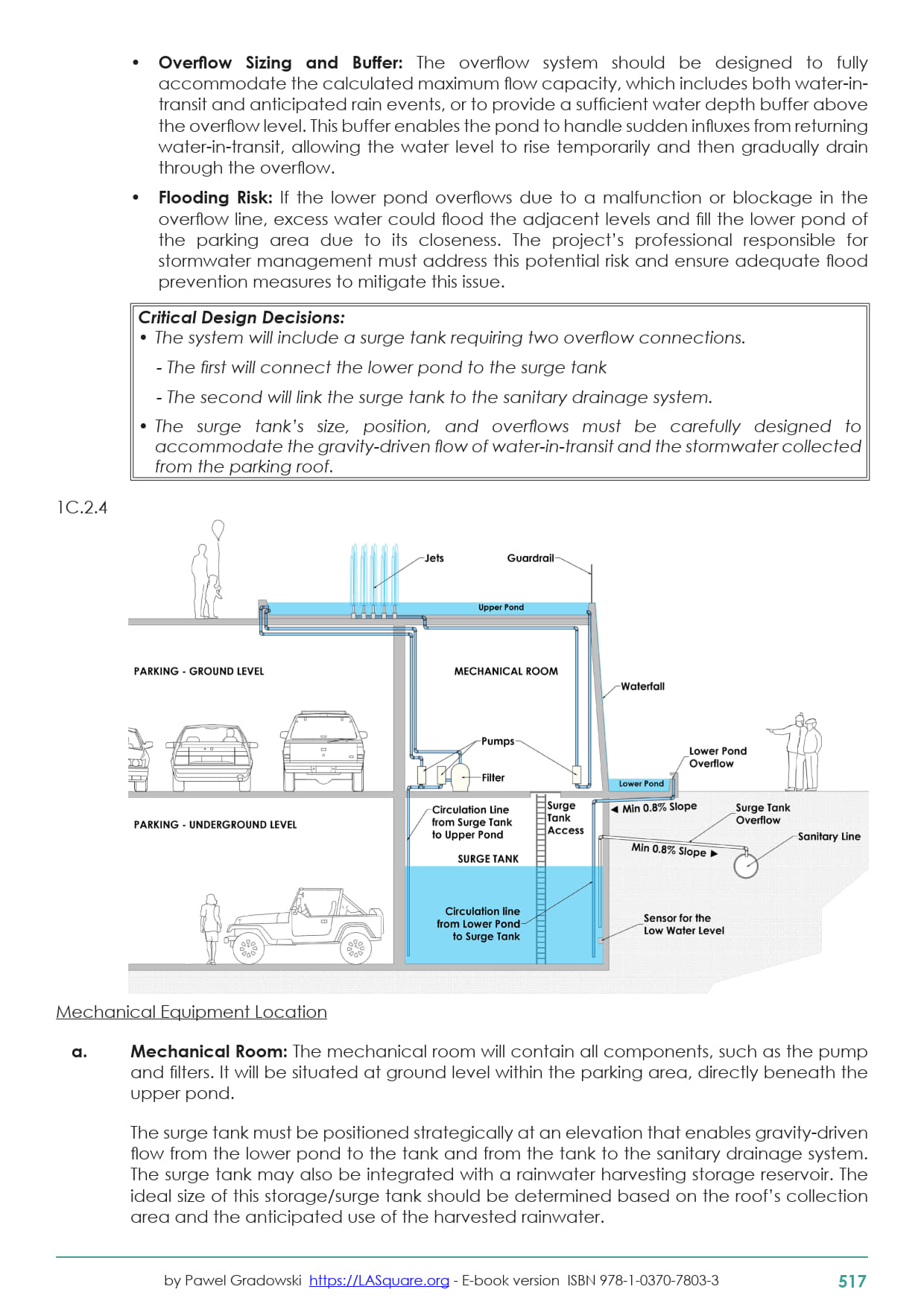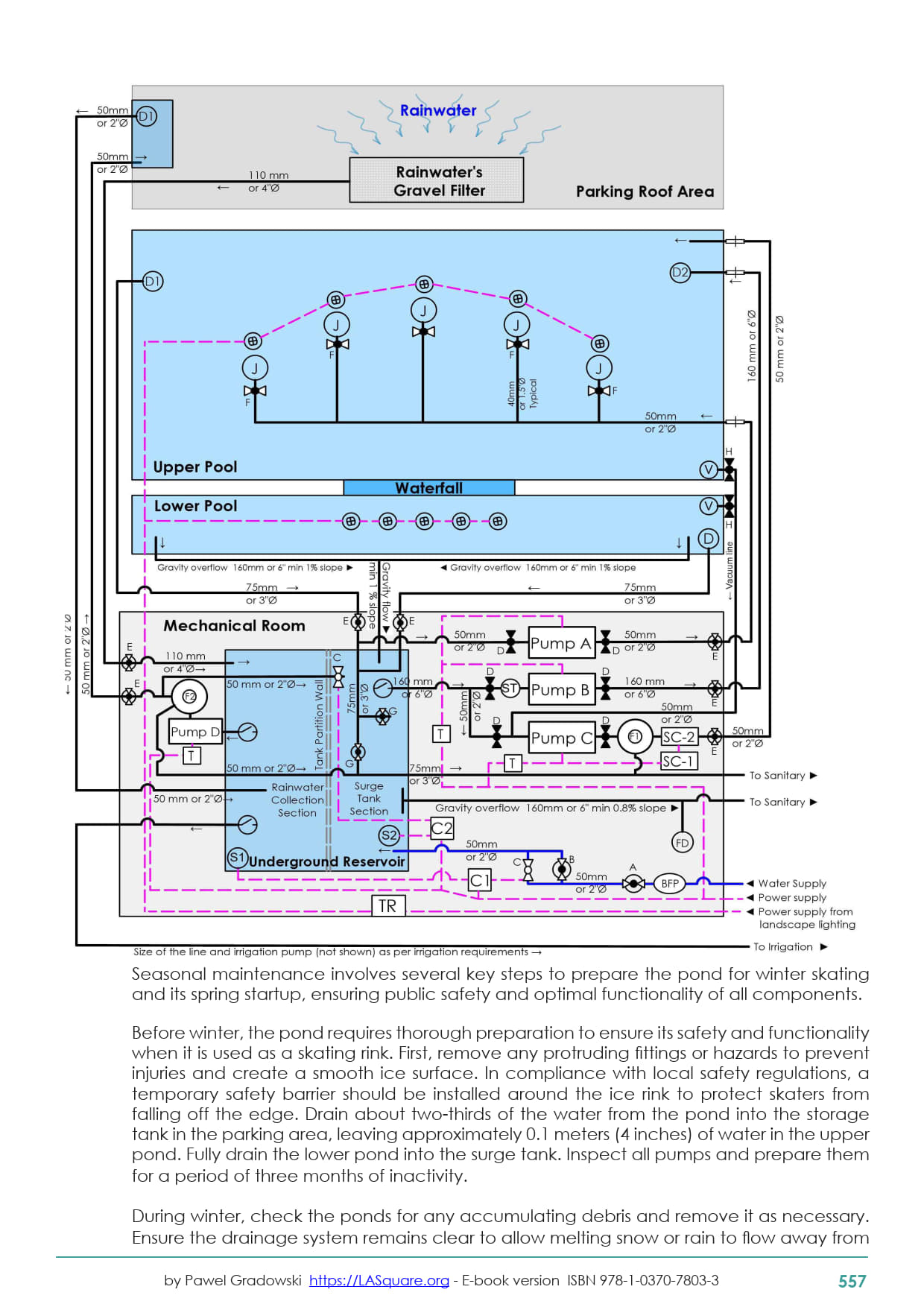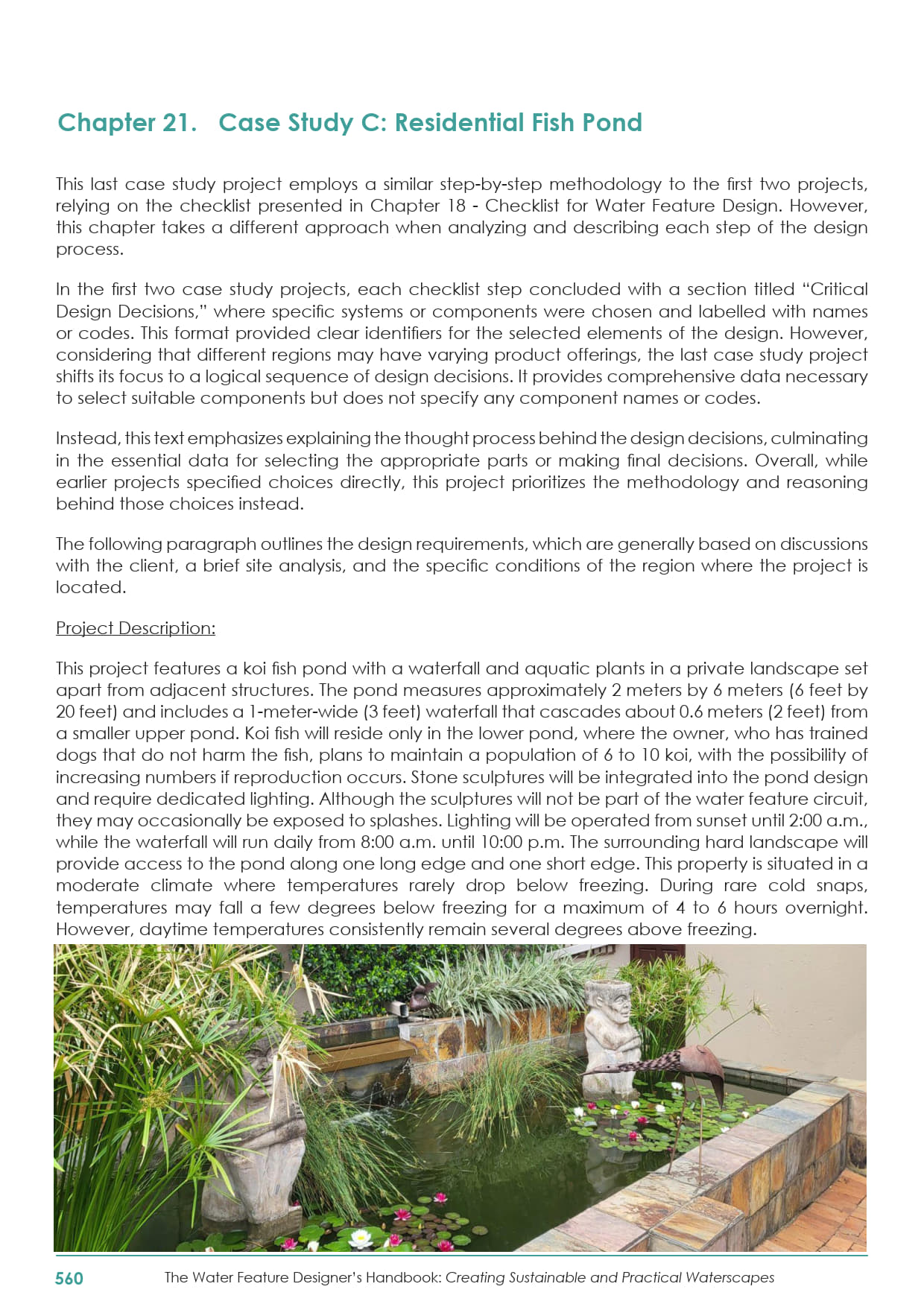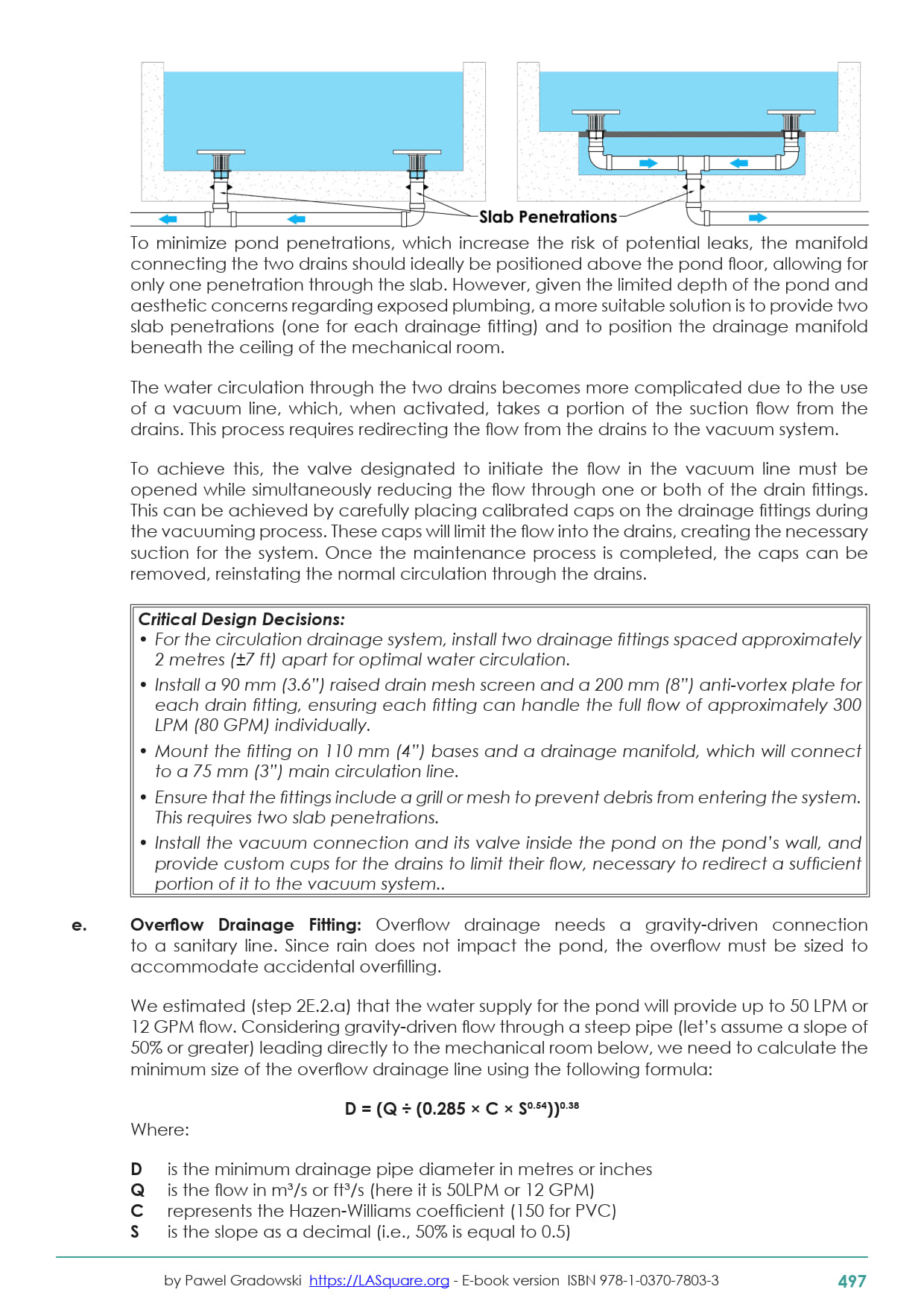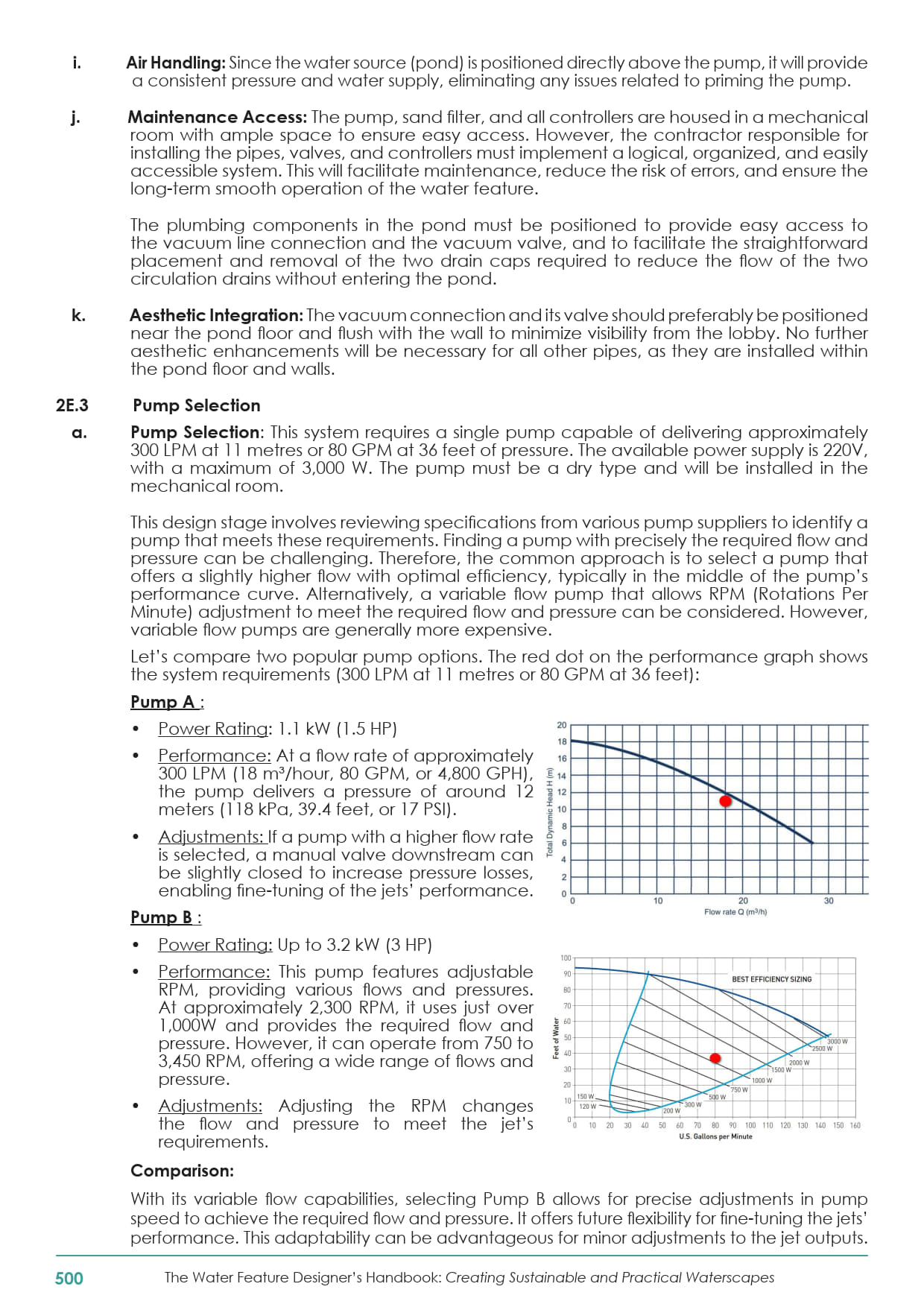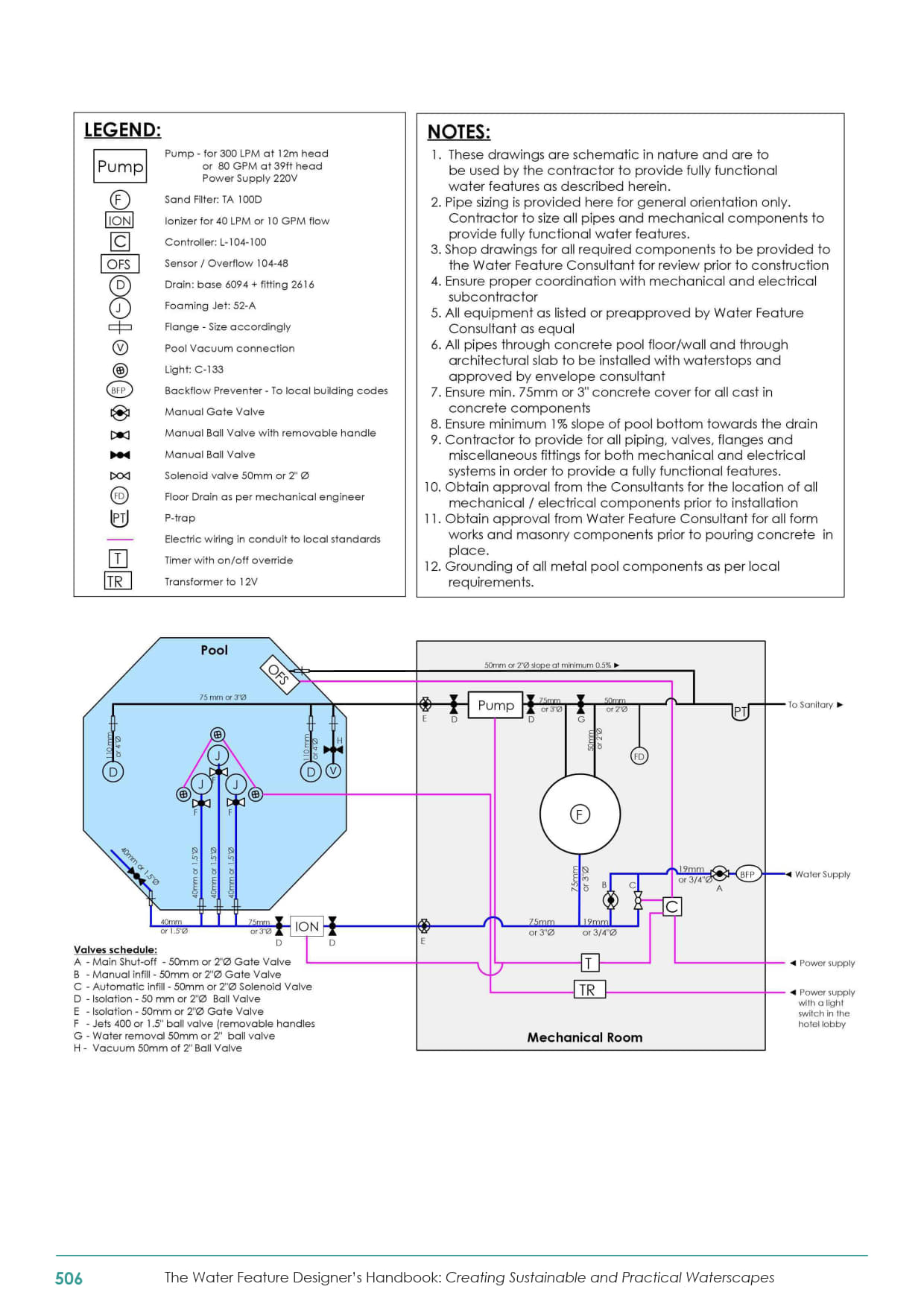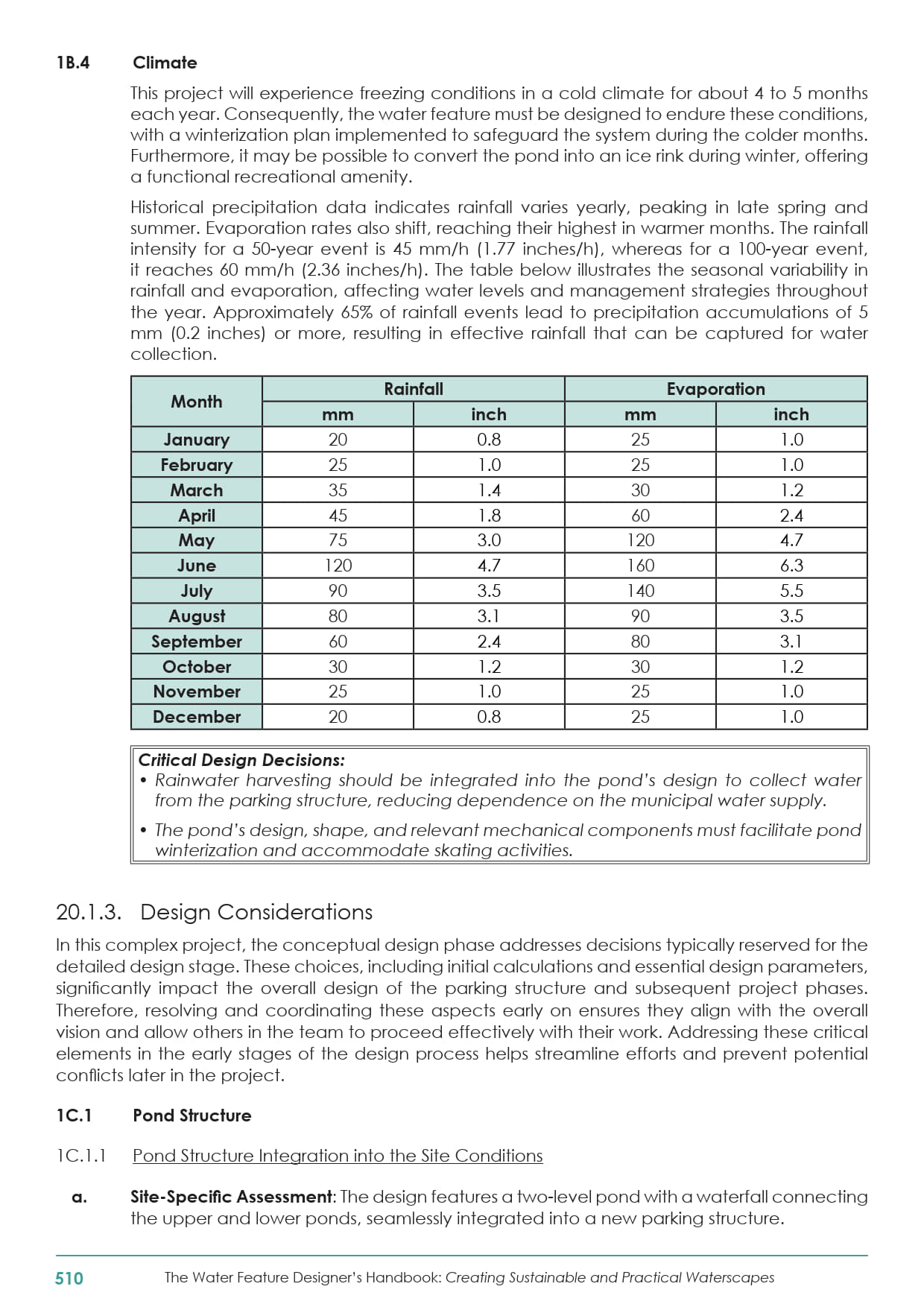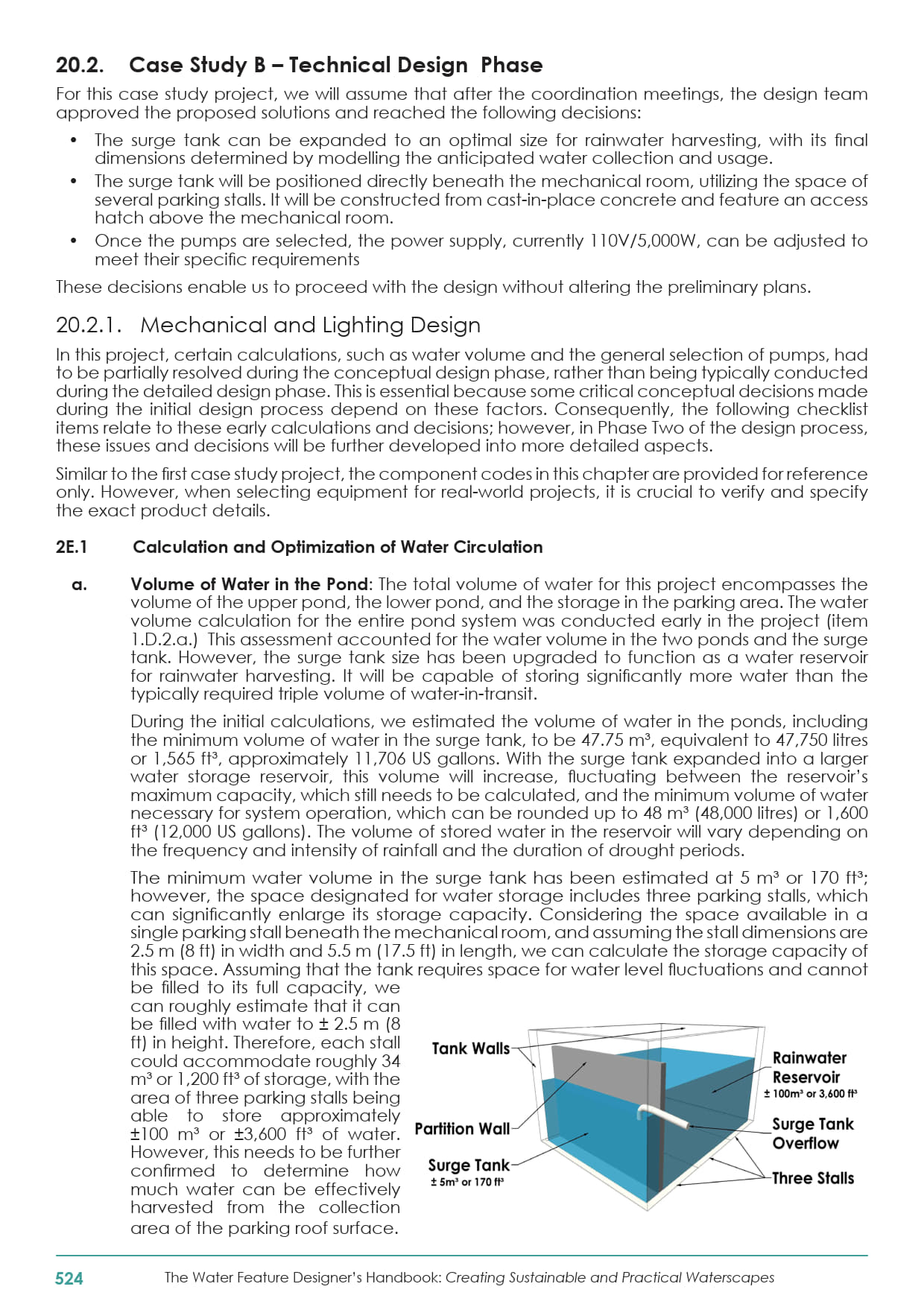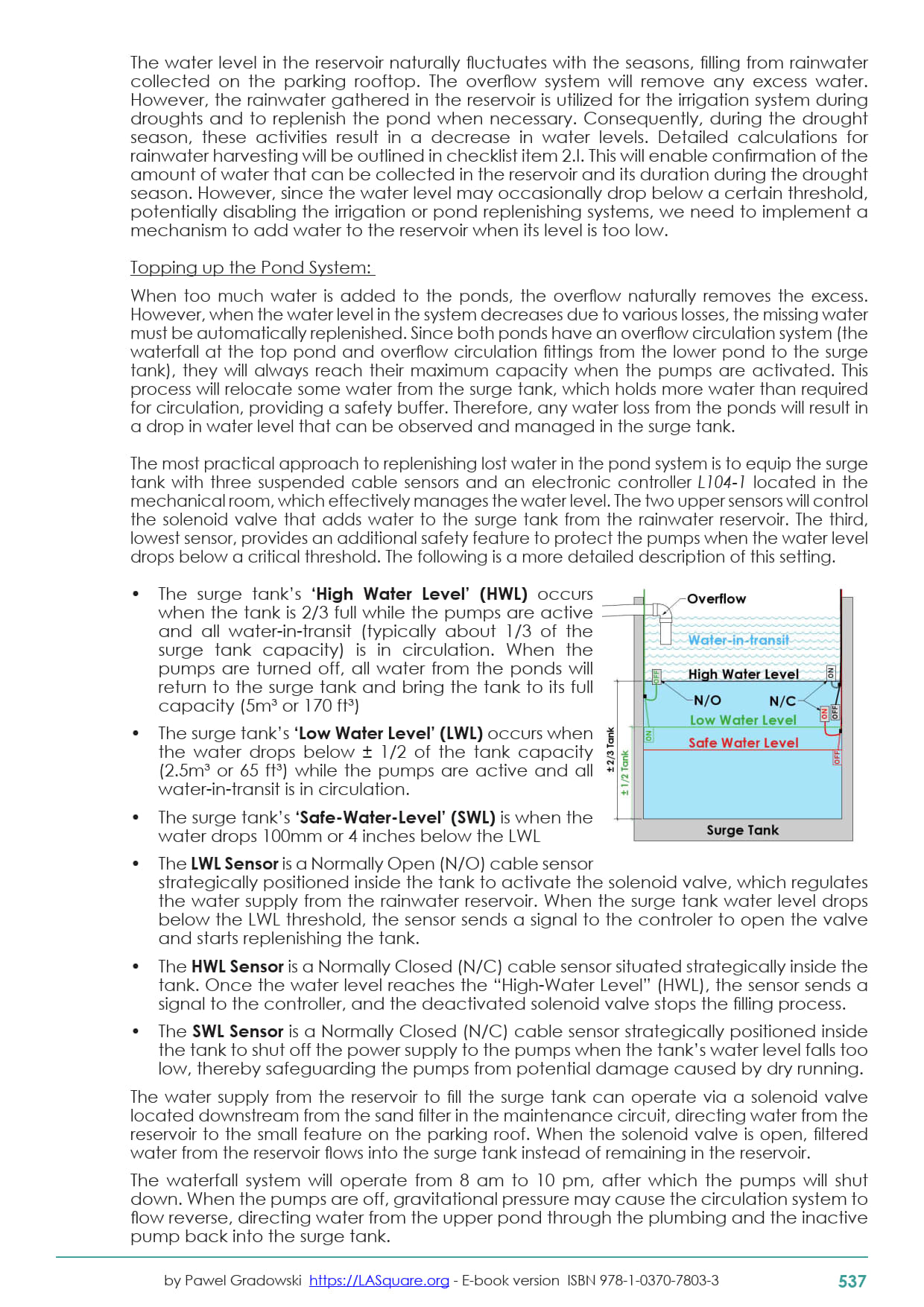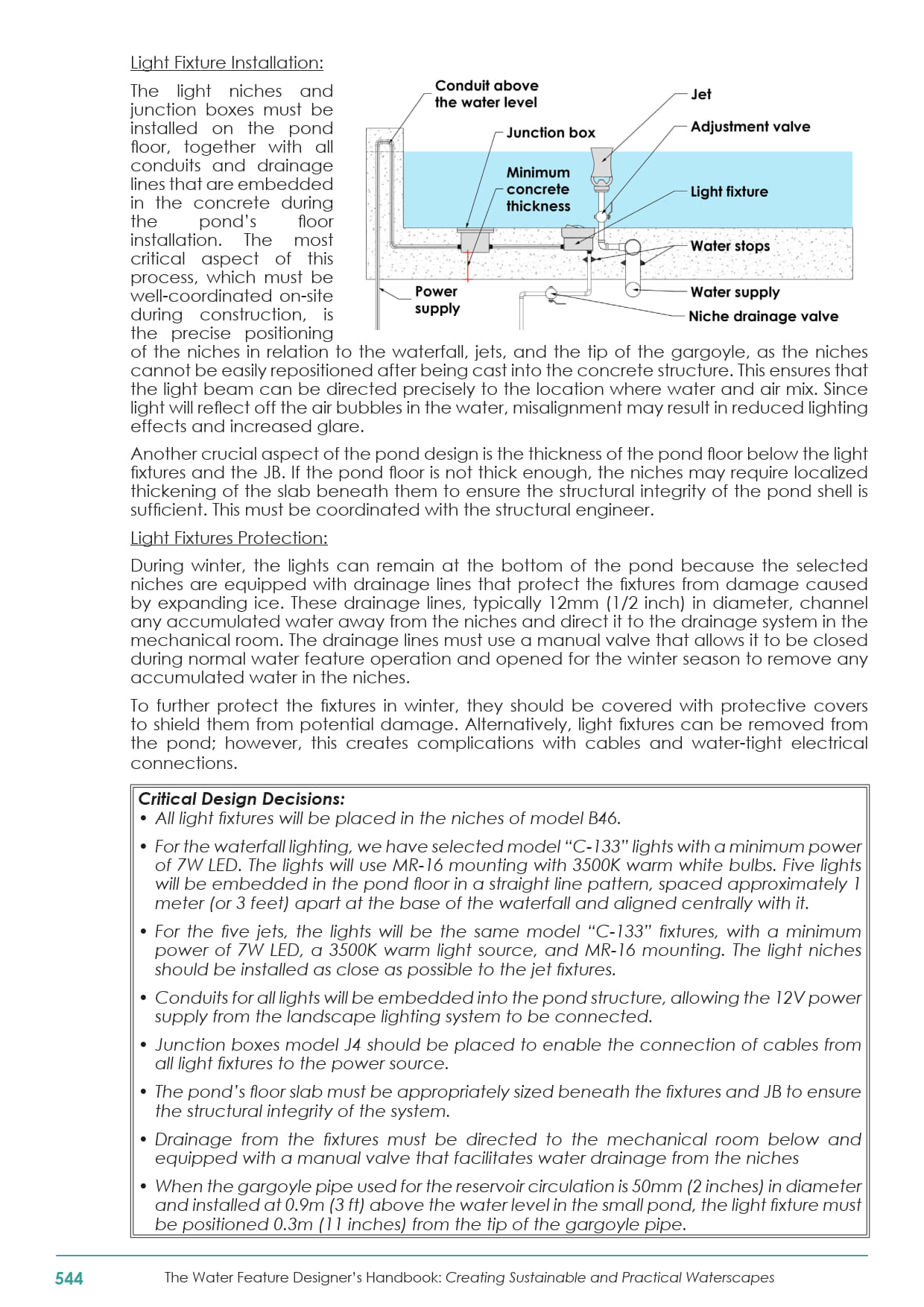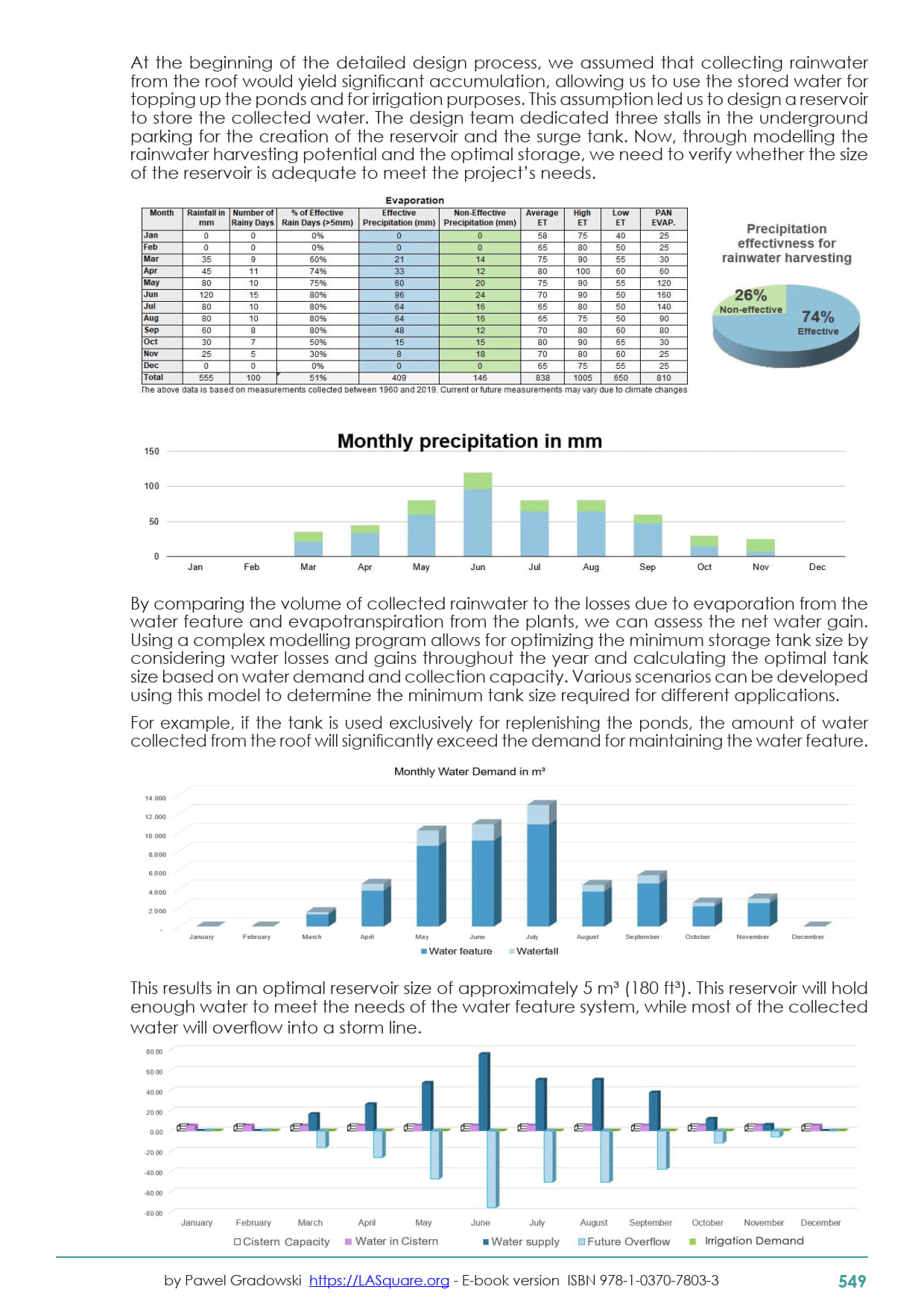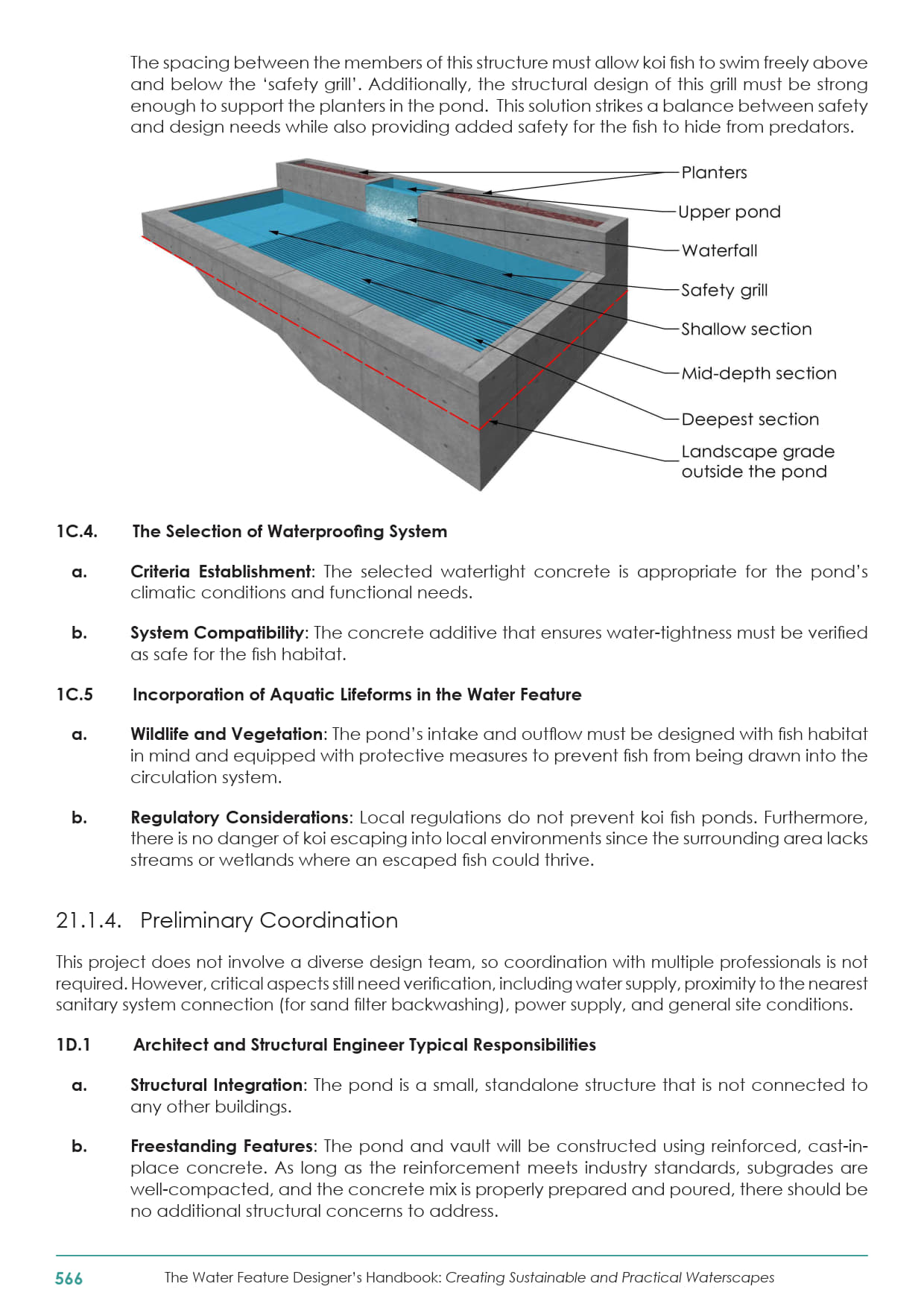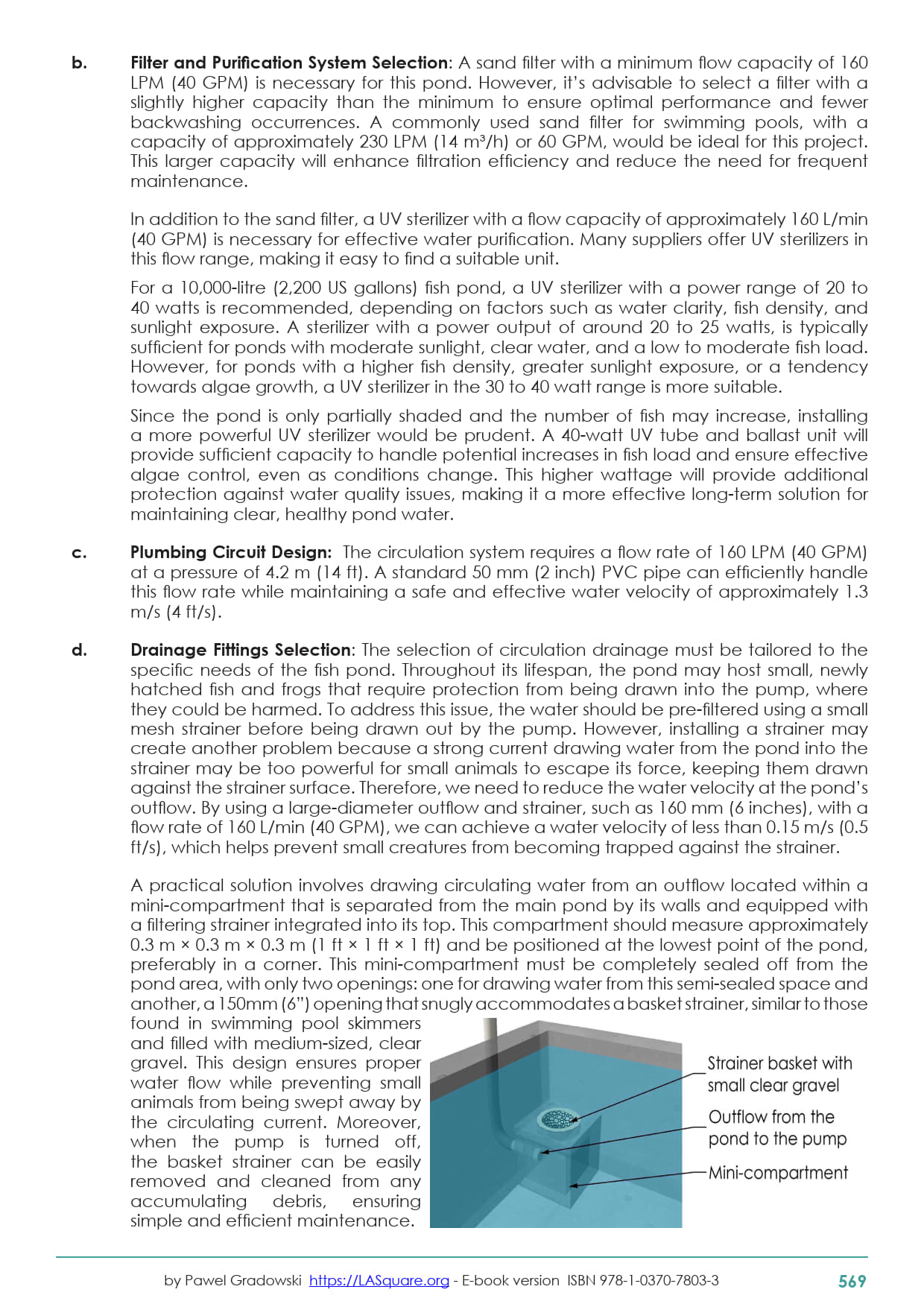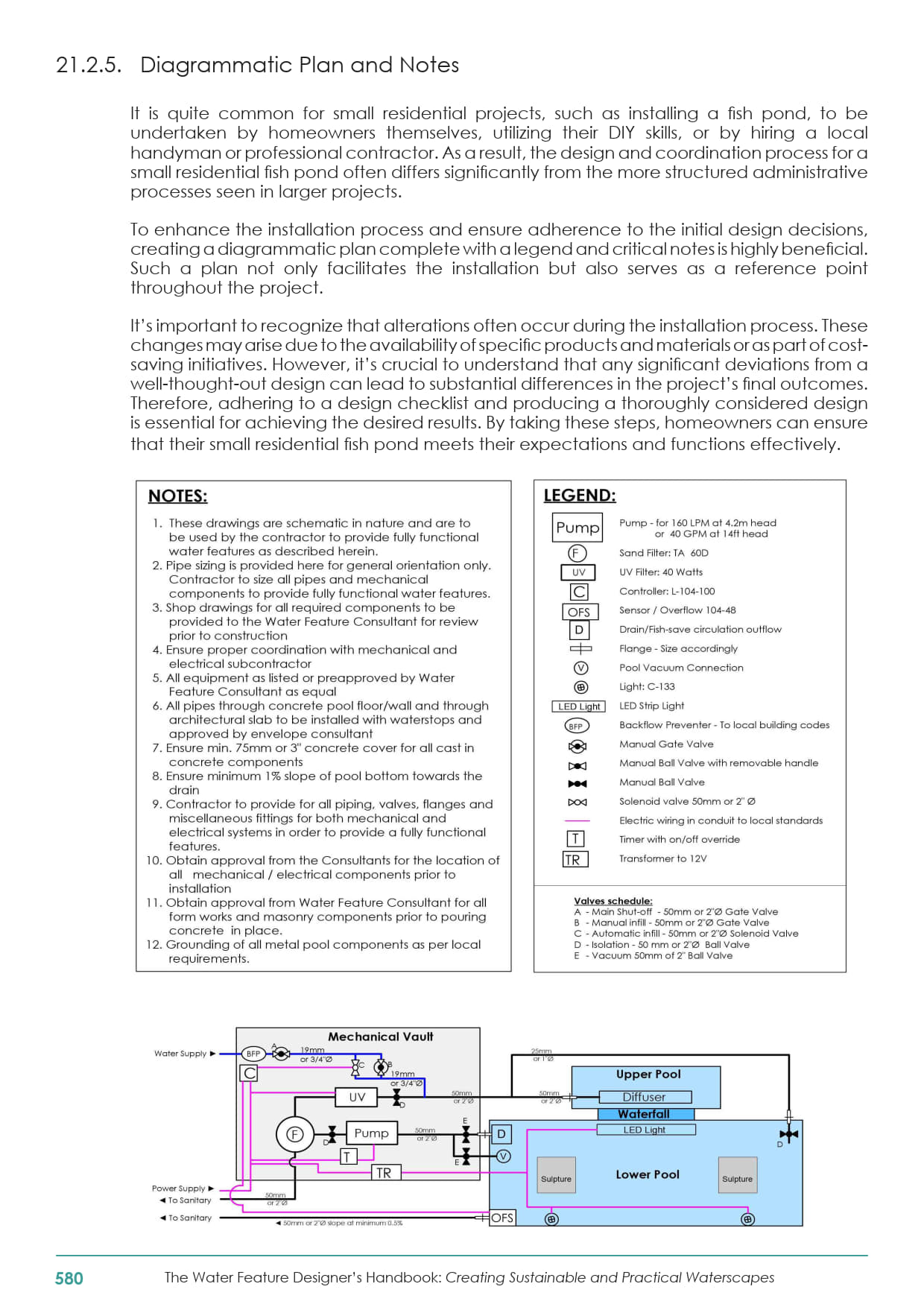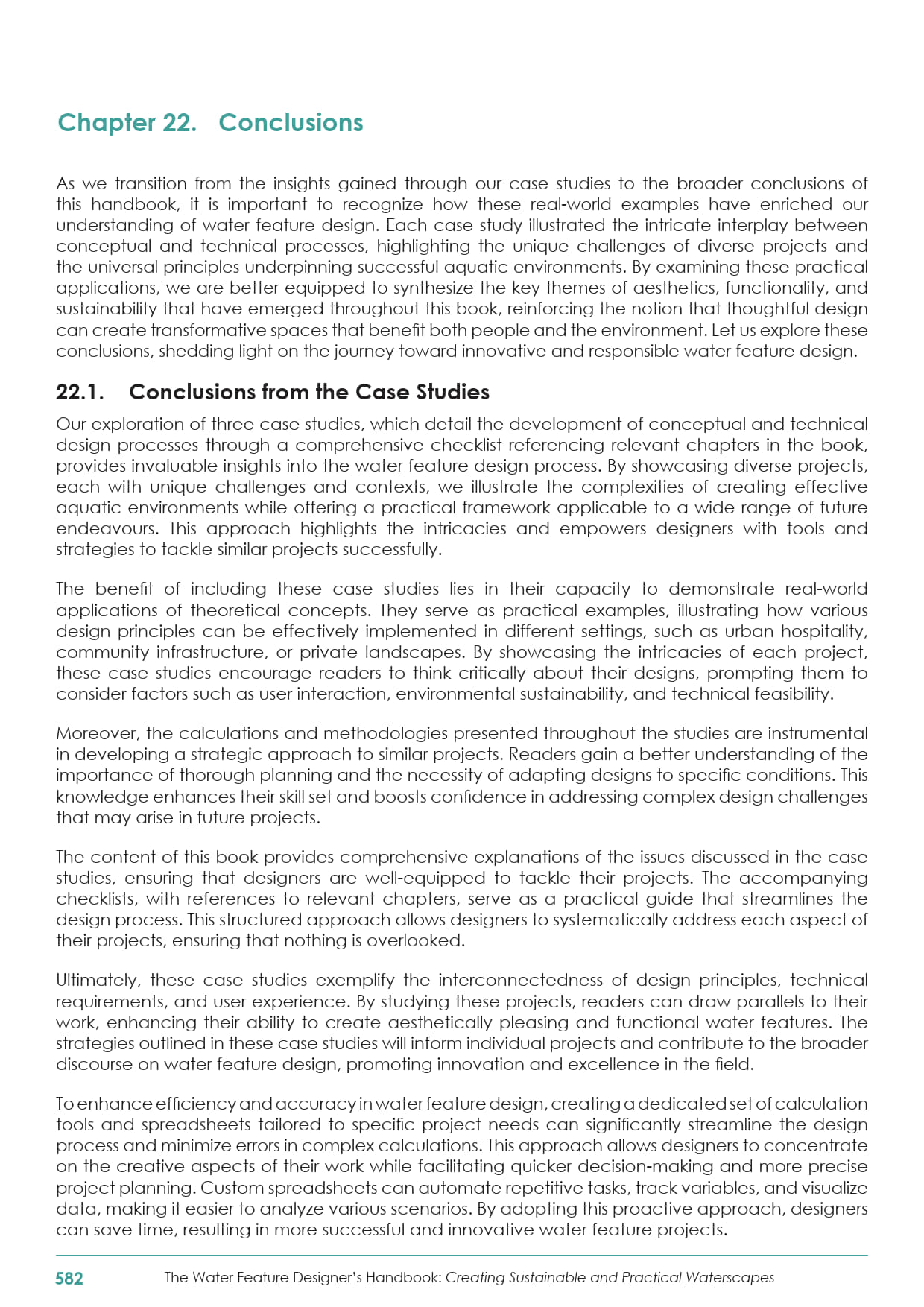THE WATER FEATURE DESIGNER'S HANDBOOK
The Water Feature Designer’s Handbook is an essential resource for architects, engineers, and landscape professionals seeking to design water features that are both sustainable and visually compelling. Spanning conceptual design, technical implementation, and real-world application, the book explores every facet of water feature design—from climate and site analysis to hydraulic engineering, lighting, aquatic ecosystems, and maintenance planning.
With clear guidelines, detailed technical strategies, and insightful case studies, this handbook equips professionals to create water features that enrich public spaces, elevate architectural intent, and stand the test of time.
What You’ll Discover:
- Design Principles: Learn how to balance aesthetics, acoustics, and spatial dynamics.
- Technical Guidance: From hydraulics to maintenance planning, get the specs that matter.
- Real-World Insights: Case studies and diagrams that bridge concept and construction.
- Sustainability & Safety: Design with water conservation, public safety, and long-term durability in mind.
Who It’s For:
This handbook is crafted for both seasoned professionals and passionate enthusiasts looking to bring their water feature designs to the next level—from landscape architects and urban planners to developers and civic leaders shaping public spaces.
About the Author
With over 40 years of experience in the field of landscape and aquatic architecture—across South Africa and North America—Pawel draws from a rich career of design, engineering, and hands-on construction. His work in Canada helped shape his holistic approach to water feature design, integrating both environmental responsibility and technical precision. As founder of LASquare, Pawel has led the transformation of civic spaces, commercial landscapes, and public environments through solutions that are not only visually impactful but also functionally robust. His commitment to knowledge sharing is at the heart of The Water Feature Designer’s Handbook, created to empower professionals with practical expertise and elevate the standards of design across the industry.
WHAT IS IN THE BOOK ...
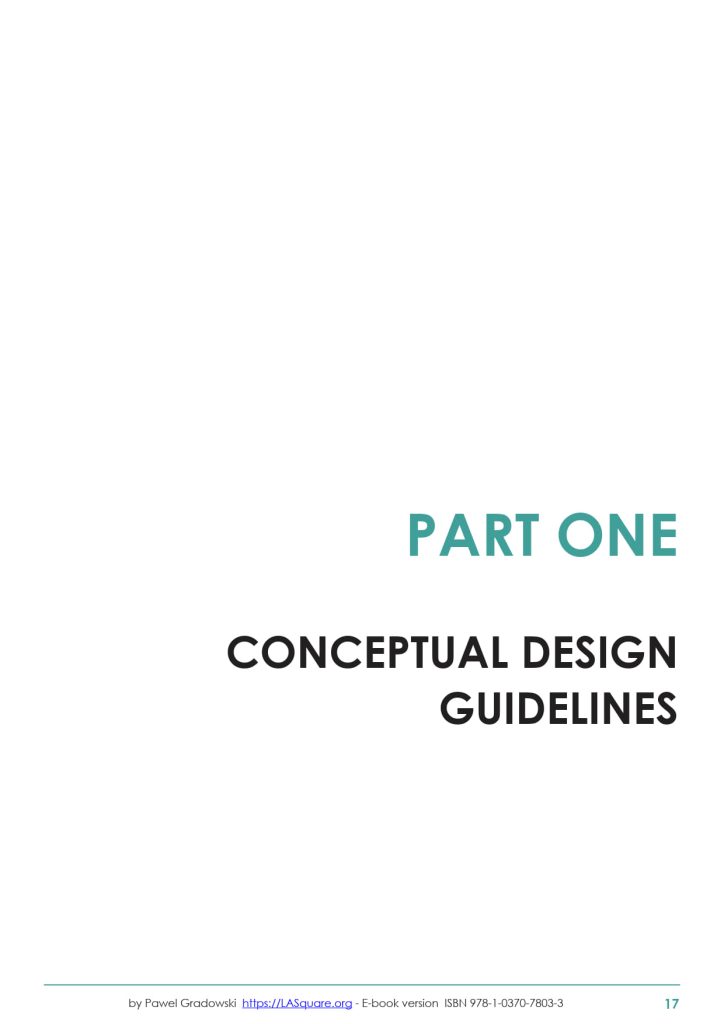
This section lays the foundation for thoughtful and effective water feature design. It begins by exploring how environmental and climatic factors—such as rainfall, temperature, site conditions, and water sourcing—shape the feasibility and sustainability of a project. Readers are guided through the process of assessing these variables to ensure that their designs are not only visually compelling but also ecologically responsible and low-maintenance. The emphasis on site-specific analysis helps professionals avoid common pitfalls and align their creative vision with practical realities.
Beyond environmental context, Part One dives into functional and aesthetic considerations that influence the early design phase. It covers how water features can serve multiple purposes—from stormwater management and recreational use to enhancing public space ambiance. Readers will learn how to balance form and function, integrating technical feasibility with artistic intent. This section empowers designers to make informed decisions from the outset, setting the stage for water features that are resilient, purposeful, and visually striking.
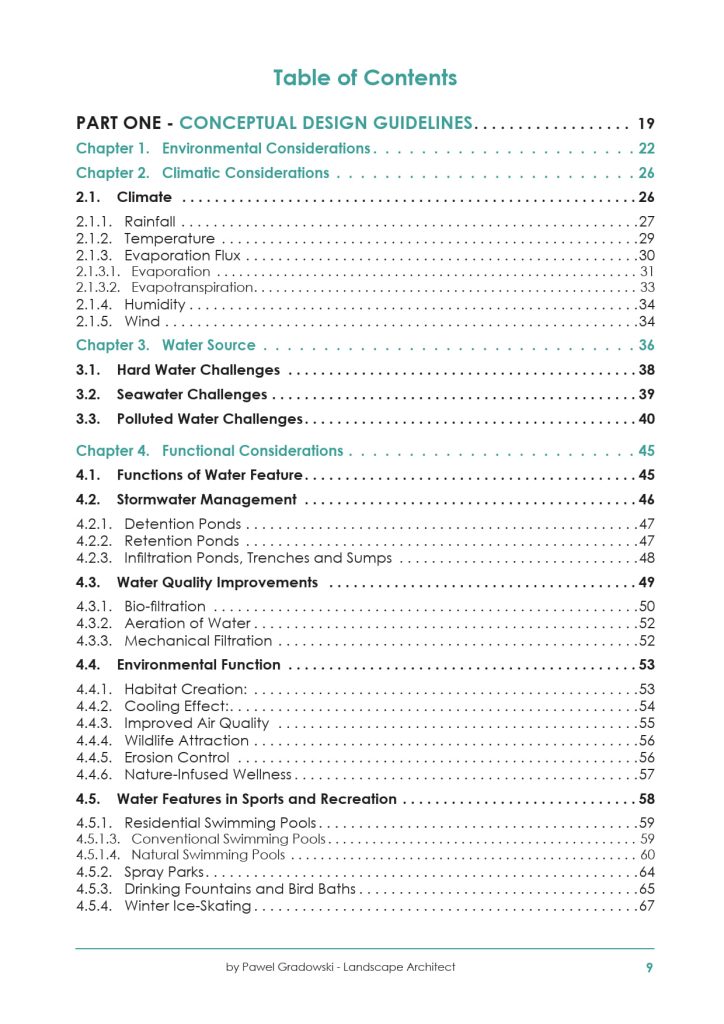
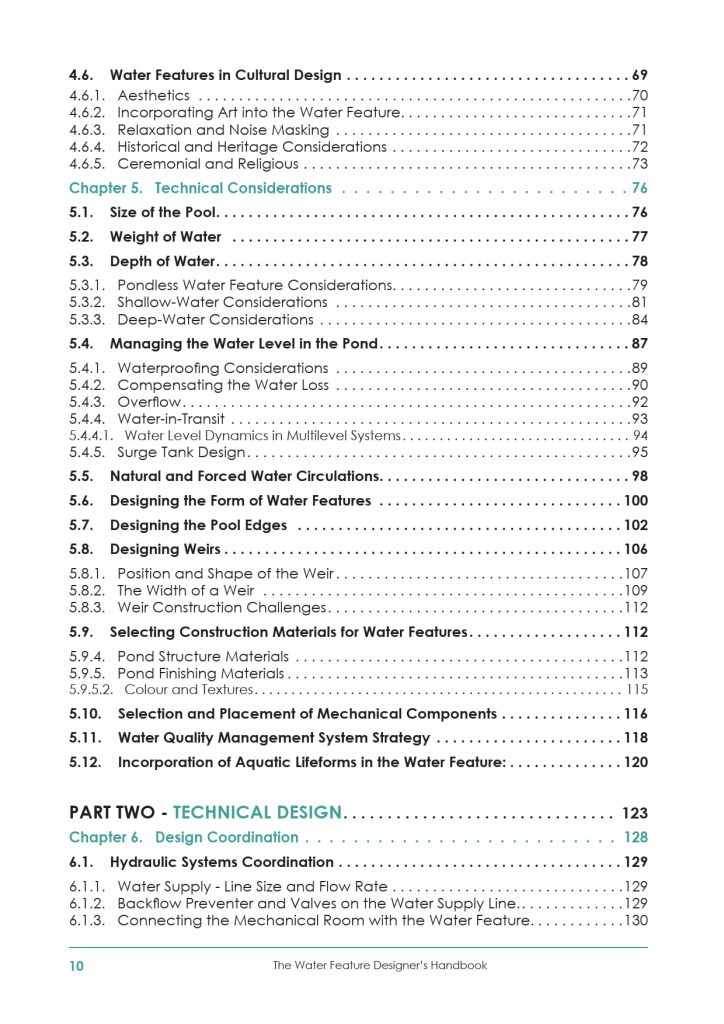
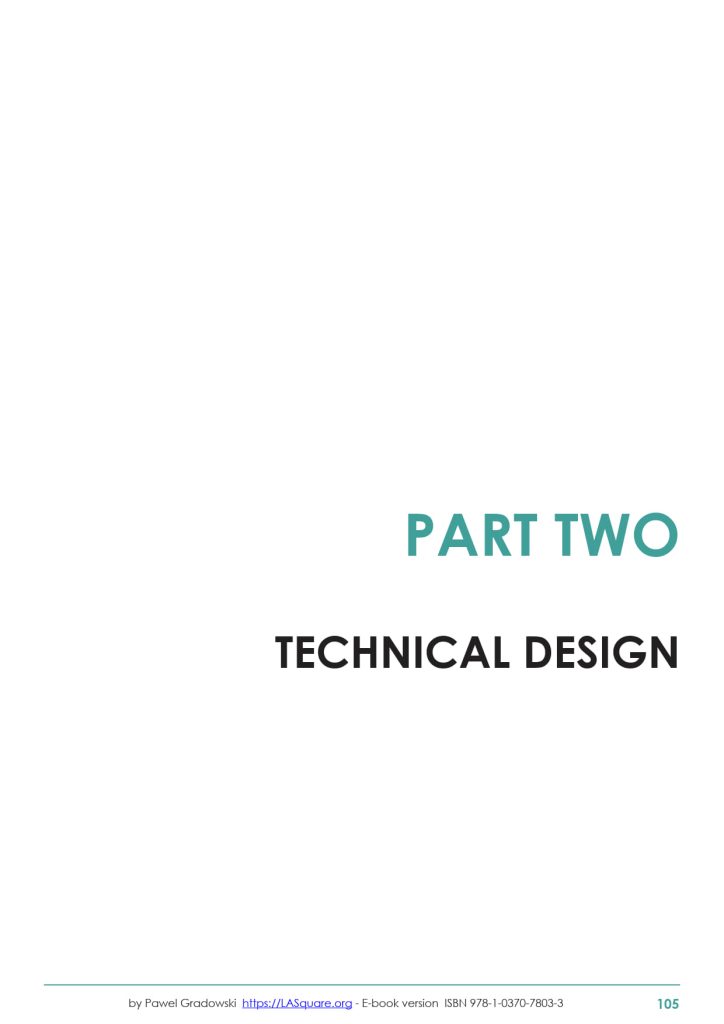
In Part Two, the book transitions from conceptual thinking to the practical aspects of water feature engineering. This section provides a comprehensive overview of the systems that enable water features to function, including pump sizing and plumbing layouts, as well as filtration, lighting, and water quality control. Readers will gain a clear understanding of how to design mechanical systems that are efficient, durable, and easy to maintain. The chapters are packed with diagrams, calculations, and practical tips that demystify the technical side of aquatic design.
What sets this section apart is its emphasis on integration. It demonstrates how mechanical components, drainage systems, and power supply must be integrated with the overall design to prevent costly revisions and ensure seamless operation. Topics such as water loss prevention, energy efficiency, and automation are explored in detail, providing professionals with the tools to design water features that perform reliably over time. Whether you're creating a gravity-fed waterfall or a multi-circuit fountain system, Part Two equips you with the technical precision to bring your vision to life.
This handbook includes all formulas and calculation examples in both metric and imperial systems, ensuring global usability.
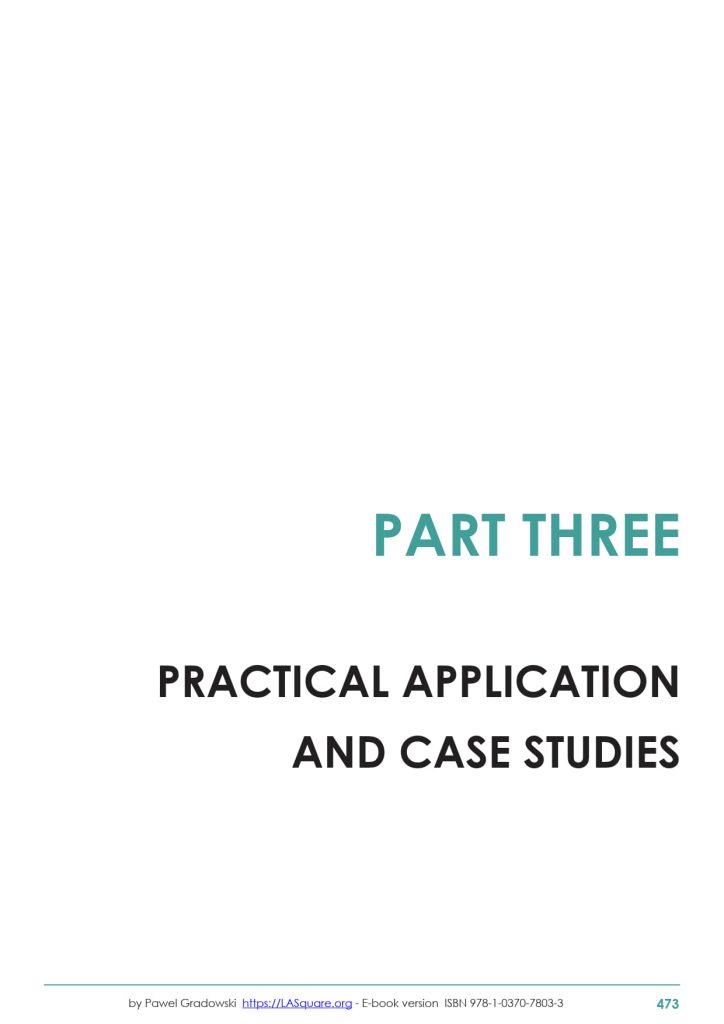
Part Three brings the theory and technical detail into the real world. It opens with a comprehensive design checklist that walks readers through every phase of a water feature project—from initial site analysis and concept development to system integration and long-term maintenance planning. This structured approach ensures that no critical element is overlooked, helping professionals stay organized and confident throughout the design and construction process.
The section then presents three detailed case studies that showcase how the book’s principles are applied in commercial, civic, and residential settings. Each project highlights unique challenges and solutions, offering insights into material selection, energy management, stakeholder coordination, and aesthetic refinement. Readers will see how thoughtful design and technical expertise come together to create water features that elevate public spaces, enhance guest experiences, and harmonize with their surroundings. It’s a compelling look at how great design becomes great reality.
HOW TO ORDER A COPY OF THE BOOK ...
Ordering your copy of The Water Feature Designer’s Handbook
Unlock expert insights into commercial water features and landscape design with the printed or digital edition of The Water Feature Designer’s Handbook. Whether you're an architect, developer, municipality, or design professional, this book serves as your practical guide to creating impactful and sustainable aquatic spaces.
Choose the format that best suits your workflow:
💻 eBook Edition (PDF)
A flexible, searchable digital companion — ideal for professionals on the move or working across multiple devices.
- Identical content to the printed edition, formatted to A4 with narrower margins — resulting in a compact 592-page PDF
- Interactive Table of Contents with direct links to chapters
- Internal cross-references for seamless navigation between related topics
- Advanced searchability using your PDF viewer’s “find” command, table of contents, or detailed index
- Cost-effective and eco-conscious: no printing, packaging, or shipping
- Available with an individual license or office license for team-wide use
💻 Printed Edition (Softcover)
A tangible, desk-friendly reference designed for visual clarity and margin note-taking.
- Full content of the eBook, printed in A4 format with wider margins — expanded to 680 pages for enhanced readability.
- Easy topic access via a well-structured index and table of contents
- Ideal for design studios, libraries, and professionals who prefer print for in-depth reading and annotation


